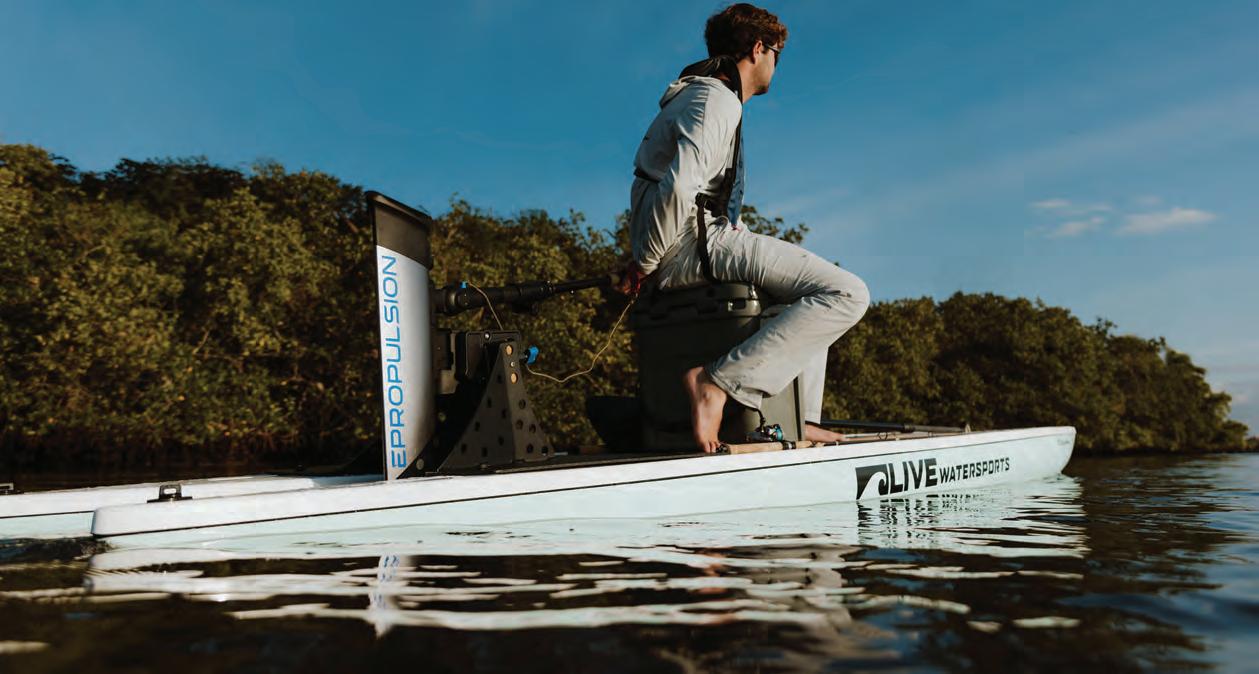




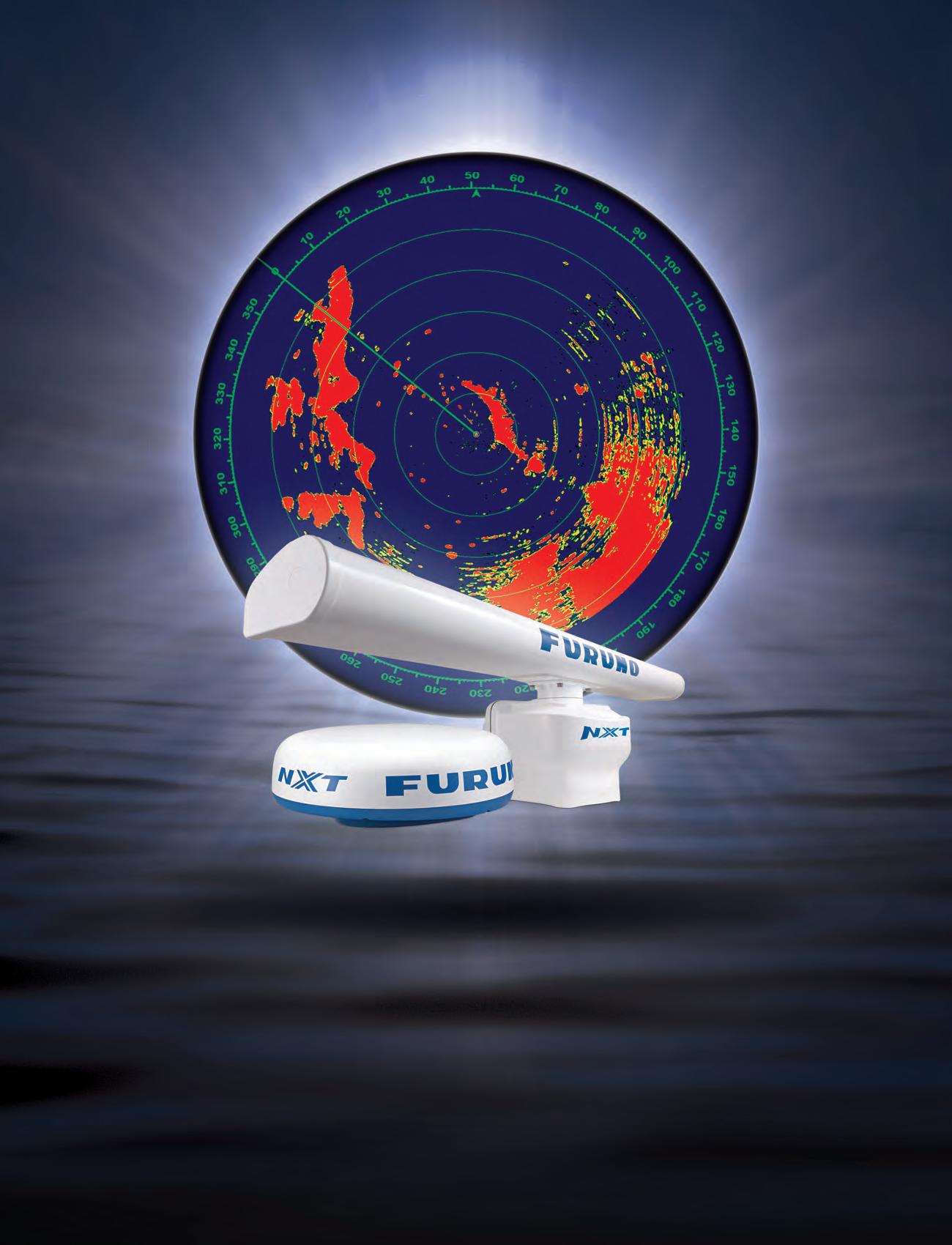
You’re looking at it! Furuno’s award-winning Radar gives you clarity & target separation like no one else. Don’t take our word for it. See for yourself. Scan here, and we’ll show you!


















You’re looking at it! Furuno’s award-winning Radar gives you clarity & target separation like no one else. Don’t take our word for it. See for yourself. Scan here, and we’ll show you!


















Embarking on the open water is an exhilarating experience, flled with the promise of adventure and relaxation. Whether you’re a seasoned sailor or a weekend cruiser, protecting your vessel with proper insurance is not just a choice—it’s a necessity. Explore the reasons why every boat owner should prioritize boat insurance for a worry-free voyage.
The open water can be unpredictable, with unexpected storms, collisions, or other potential accidents. Boat insurance can give you fnancial protection if there is damage to your vessel, providing coverage for repairs or replacement.
Accidents on the water can result in damage to other boats, docks, or even injuries to passengers. Boat insurance offers liability coverage, which can pay for damages or injuries you’re liable for while boating, up to specifed limits, and lawsuit costs if you’re sued. This includes damage you cause to another watercraft or if someone on or near your boat is injured and you’re found to be legally responsible.
Unfortunately, boat theft and vandalism are realities that boat owners face. Boat insurance has comprehensive and collision coverage that can protect you against events outside of your control, including theft and vandalism.
Accidents on the water may lead to injuries for you or your passengers. Boat insurance offers a range of optional medical payments coverage limits, helping to cover medical expenses if you are in an accident or someone is hurt on your boat, regardless of fault.
If you fnanced the purchase of your boat, most lenders require insurance coverage to protect their investment. Having boat insurance not only fulflls these requirements but also gives you peace of mind knowing that your fnancial interests are safeguarded.


Some water municipalities and marinas may require proof of insurance for docking or accessing certain areas. Boat insurance allows you the fexibility to explore different destinations without worrying about entry restrictions.
Emergency towing and assistance
Progressive boat insurance can include optional Sign & Glide® On-Water Towing coverage. If your boat is disabled or breaks down on the water, Sign & Glide® pays for on-water towing, jump starts, soft un-groundings, and fuel delivery.
Wreckage removal
If your boat sinks, Progressive boat insurance will cover the cost of removing your boat from the water (if removal is legally required).
Investing in boat insurance is not just about protecting a valuable asset; it’s about safeguarding the memories, experiences, and joy that come with your on-water adventures. Don’t let unforeseen circumstances disrupt your journey—navigate with confdence, knowing that Progressive boat insurance has you covered. Ensure a smooth and worry-free voyage, because when it comes to your boat, peace of mind is the ultimate luxury.
Scan to get a quote in as little as 4 minutes
learn more.





















Nestled in the scenic Blue Ridge Mountains of North Georgia against a backdrop of forests and river banks, the bustling Bavarian alpine village of Helen o!ers a wealth of shing opportunities for anglers of all skill levels.
By Unicoi Out tters
Trout shing is a highlight in the Helen area, with rainbow, brown, and brook trout abundant in local waters. Anglers can explore various shing experiences:
• High-Elevation Wild Trout: Tackle small creek wild trout in the serene mountain streams.
• Stocked Streams: Fish in streams replenished by the Georgia Wildlife Resources Division, o!ering both catch-and-keep and catch-andrelease options.
• Smithgall Woods State Park: Reserve a spot to pursue trophy trout in this pristine park.
• Private Water Access: Book guided or unguided trips on exclusive sections of the Chattahoochee and Soque Rivers.
#e optimal trout shing seasons are spring (March-May) and fall (October-November), with cooler water temperatures and comfortable
air conditions. Winter shing is also rewarding for those prepared for colder conditions.
For bass enthusiasts, the Helen area o!ers diverse shing experiences:
• River Fishing: Target native shoal bass, spotted bass, redbreast sun sh, and bluegill in the Chattahoochee and Chestatee rivers.
• Lake Fishing: Explore lakes like Burton, Seed, Rabun, Chatuge, and Lanier for largemouth bass, spotted bass, and sun sh species.
#e Helen, GA region is also home to three species of native redeye bass: Chattahoochee, Bartram’s, and Coosa bass. #ese colorful and spirited sh are best targeted from April to September. Anglers can pursue these species as part of the Georgia Bass Slam.
And, worth noting, Helen is an excellent destination for family shing adventures:
• Unicoi State Park: O!ers opportunities for
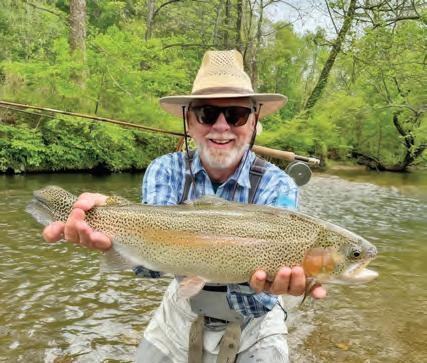
kids to trout sh in Smith Creek, bream sh in the lake, and enjoy activities like hiking to Anna Ruby Falls, zip-lining, kayaking, paddle-boating, and archery.
• Lake Burton Trout Hatchery: A short drive from Helen, this hatchery allows visitors to sh for stocked trout at Moccasin Creek State Park, explore wild trout streams upstream, bream sh at the lake shoreline, and hike to Hemlock Falls.
Whether you’re an experienced angler or a beginner, Helen, GA o!ers a diverse range of shing experiences and is a worthy destination to add to your bucket list.
Unicoi Out tters, established in 1994, is the Helen, Ga area’s premier y shop and guide service, providing expert guidance and quality gear to enhance your shing experience. Visit unicoiout tters.com to learn more about available trips, gear, and to book your next shing excursion. To learn more about Helen, GA, visit helenga.org.






By Ben Martin, Editor in Chief

Chimney Rock Village, North Carolina was decimated by last year’s rare hurricane surge in the Rocky Broad River. Decimated. All ve of the village’s bridges, 30 percent of the small businesses, most of Main Street to Bat Cave, the village’s two campgrounds, over 35 RVs, and over 30 homes were washed away. With only one road in or out of Chimney Rock, no power, no public services and winter coming on, this little mountain village of 125 residents banded together to help each other. #ey immediately rolled up their sleeves and began the process of survival and renewal.
Always one of this writer’s favorite trout streams, Chimney Rock Village and it’s meandering Rocky Broad River was an annual sojourn for me and many anglers throughout the country.
I recently visited Chimney Rock and had the opportunity (privilege) to speak with the town’s mayor, Peter O’Leary, about the village’s reconstruction e!ort and how truly self-reliant these mountain folk are. According to Mr. O’Leary, volunteer groups like Spokes of Hope and the 101st Airborne showed up with much needed supplies and the Chimney Rock community, along with the volunteers, began the process of moving forward; volunteers like Shane Zoccole, Barbara Meliski, Joe from Wyoming, the whole Spokes of Hope crew immediately started pitching in.
#e river has taken a somewhat di!erent route through Chimney Rock. Some say its course now resembles its course from the mid 1800s when residents rst began settling the Hickory Nut Gorge. Today, crews are hard at work everywhere you look, roads are in and the future looks bright for a return to a new form of reality for both the residents as well as visitors. And while the course of the river has morphed, the sh haven’t gone anywhere, and while the riverfront buildings will invariably change, the beauty of the

mountains and the serenity and superior trout shing of the Rocky Broad River, along with the spirit of the residents will likely never be diminished. For that we wholeheartedly embrace the moniker of “Mountain Strong” for everyone involved in this heartfelt e!ort to reclaim and restore this beautiful mountain village.
Whether you’re chasing trophy fish or charting your next offshore course, your time on the water deserves the best in navigation and marine technology. Defender brings you UNBEATABLE PRICES and EXPERT SUPPORT on Lowrance and Simrad electronics—trusted by professionals and weekend warriors alike.

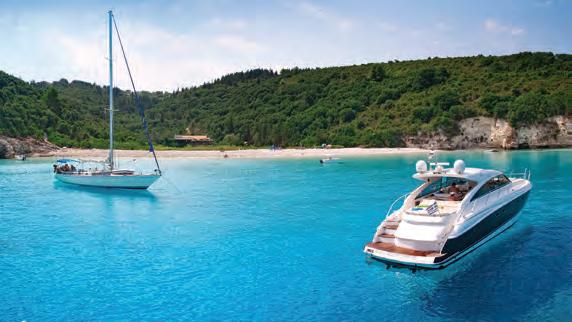
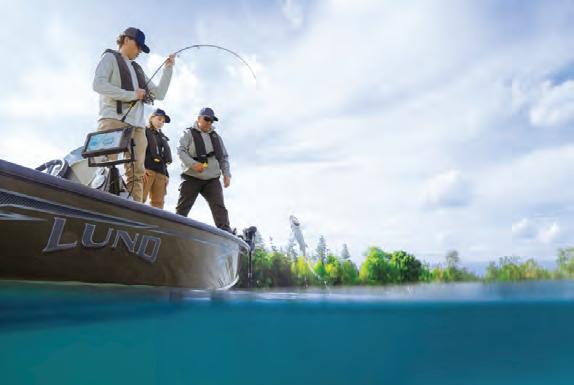




during the initial feeding frenzy.
If you have outriggers, trolling 4 lines is pretty straightforward. If your riggers have dual clips, the highest set clip will hold your longer lines. If you only have single clips, use them for longer lines with rigged ballyhoo, and run two chuggers from the gunnels, set closer to the boat.
If you dont have outriggers, you can use shorter rods or bent-butts for short lines near the back of the boat, and run two longer lines from taller trolling rods, set behind them midship, or just keep it simple and run two or three lines. #e most important rule of setting a spread is that lures that dive deeper should be set as shorter lines, running closest to the boat, while lures that skip the surface will be your longest set lines. #is gives you the ability to turn the boat without risking tangles. If your short chuggers are exactly the same, they can be run at identical lengths, otherwise, stagger them appropriately according to their weight and depth they run through the water.

By Capt. Quinlyn Haddon
or new boat owners with a vessel and captain capable of getting o!shore, targeting mahi is a great choice for rst-timers who are wanting to push into the o!shore shery.
Mahi shing doesn’t require any predetermined coordinates, and anyone can head out there and nd them. Depending on your location and time of year, you can start looking for signs of life as shallow as 100’. #is time of year in the Florida Keys, you may have your best luck past 500’.
As you make your way o!shore, your hunt begins immediately. Your head should be on a swivel, scouring near and far for the telltale signs of mahi activity. Current edges, weedlines, debris, baitsprays, and diving birds found within the
desired depths, are all worth checking out.
When you have found one of these potential mahi zones, you will initially troll the area, and then move into casting at the school once you have hooked up to a sh.
Depending on your boat’s set-up, you can get the job done trolling 2-5 lines. It really isn’t necessary to go overboard with a mahi spread as they have a tendency to tangle lines, and a majority of your catching will be done a$er you have hooked up to a single sh. Once you have hooked up on the troll, you will have to clear all the other lines to prepare for casting at the school. If you have too many lines to clear, you may miss your opportunity for multiple hookups
If you want to run a $h line down the center, you can choose a long line that increases your chances of catching tuna. #is rod should be placed up high on the center of the boat in the rocket launcher and should have a very light lure that skips the surface. Alternatively, you can run it short from the transom, with a lure that dives deeper and increase your chances of catching wahoo.
If you opt for the short $h line, be aware that running anything with treble hooks is not recommended for targeting mahi. Not only do ip like rabid snakes when in the boat, but as they jump and shake when hooked, they can send that lure %ying back at you if they are successful in freeing themselves. Choose a wahoo lure with single hooks if you are running this type of spread.
If you go with a long line as your $h line, be mindful that you will likely catch more weeds this way. #is is a better option in open water while trolling under birds rather than weedlines. It also makes cult to make tighter maneuvers. Always make wide turns, and speed up through them to keep the lines tight and maintaining the lure’s action.
Once you’ve hooked into a mahi, slow the boat but keep it in gear while you clear the other trolling lines. Bring the hooked sh close to the boat, but leave it swimming in the water as it will act like a chumbag to bring his buddies up to casting range. Grab your spinning rods with 50-80# leader and an 8/0 j hook, toss on a live or chunk of bait and cast out behind the hooked sh. Let back, occasionally stopping the line with your nger and giving it a little twitch and then continuing to free-line it back. When you get a bite, give the sh a few seconds to eat awnd then close your bail and reel. Once you have all your rods hooked up with sh, start taking them into the boat one at a time and casting back into the school, holding multiple hooked sh in the water as you start rotating them out.
If you aren’t quite ready to go solo yet, give Sweet E’nuf Charters a call to book a mahi catching trip and we’ll teach you everything you need to know to make the mahi fear you.
Happy hunting!
Capt. Quinlyn Haddon guides with Sweet E’Nuf Charters out of Marathon, e Florida Keys. (504) 920-6342. www.captainquinlyn.com; IG: @captainquinlyn

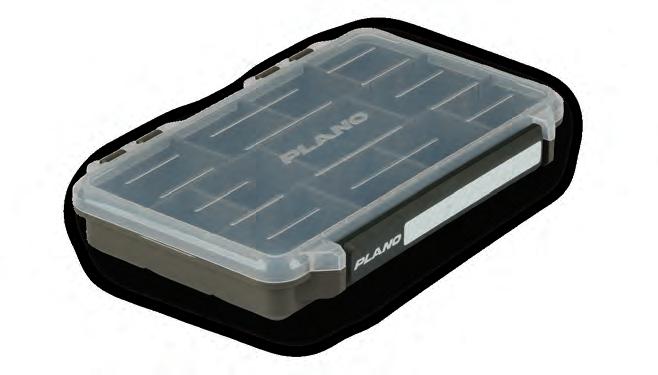










It’s no fsh tale when you run with a John Deere. You can get everything done faster and easier, so you get more time on the water. Plus, our special offers make them the catch of the day.




The National Oceanic and Atmospheric Administration (NOAA) Fisheries has announced a short recreational season of just two days for 2025 for red snapper in the South Atlantic. Red snapper harvest will be open for recreational anglers in the South Atlantic, from North Carolina through Florida, July 11 and 12. !e limit is one sh per angler.
Dates are subject to change in case a small cra weather advisory is projected. Any change in the date of the recreational season will be announced in the Federal Register, Fishery Bulletin, and an announcement via NOAA Weather Radio.
NOAA Fisheries also withdrew the proposed bottom shing closure from Amendment 59 to the Fishery Management Plan for the SnapperGrouper Fishery of the South Atlantic.
Amendment 59, introduced in January of this year, proposed a 3-month bottom shing closure for 55 species of reef sh in Northeast and Central Florida each year. Comprising federal waters from the Florida/Georgia border to Southern Brevard County, the closure would have had devastating

impacts on the sport shing industry and coastal communities that rely on angling tourism dollars.
!e American Sport shing Association (ASA) applauds the elimination of the proposed closure. “We are encouraged to see NOAA reconsider and withdraw the $awed bottom shing closure,” said Martha Guyas, Southeast Fisheries Policy Director for ASA. “With more than 5 million anglers taking to the water each year in our state, recreational shing contributes $11.1 billion to the Florida economy and supports more than 70,000 jobs. !is haphazard proposal would have gutted the industry without any sound scienti c justi cation.”
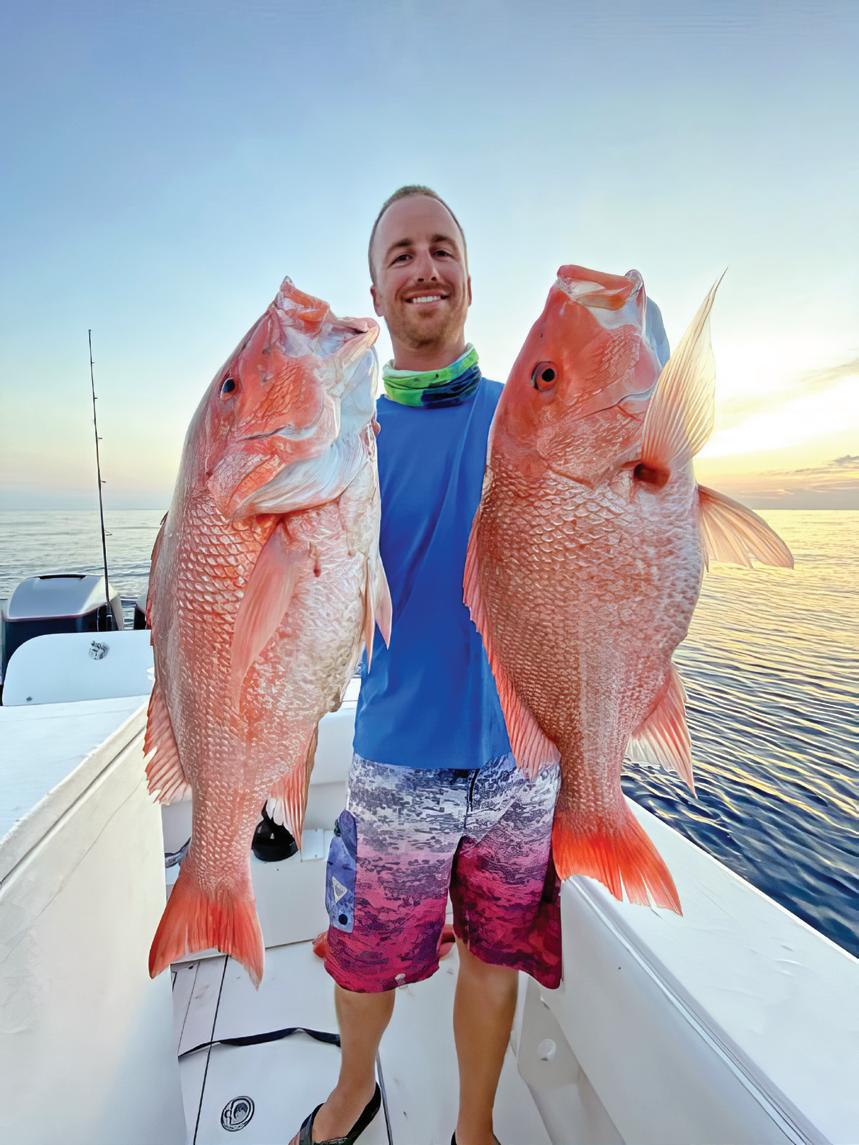
Moving forward, continued e orts to improve data collection and management are necessary to assist in providing more reasonable access. !e South Atlantic Great Red Snapper Count is underway and is expected to be completed later this summer.
ASA led a joint letter earlier this year in which 76 members of the recreational shing industry from dozens of states expressed their opposition to the area closures included in the Amendment. NOAA Fisheries also held multiple in-person hearings and received extensive comments during the public comment period, most of which opposed all or part of the proposal.
Unfortunately, Amendment 59 still maintains an unacceptably short recreational season of just two days for 2025. Although there was widespread grumbling and gnashing of teeth by recreational anglers, it did not come as a surprise to pretty much anyone.


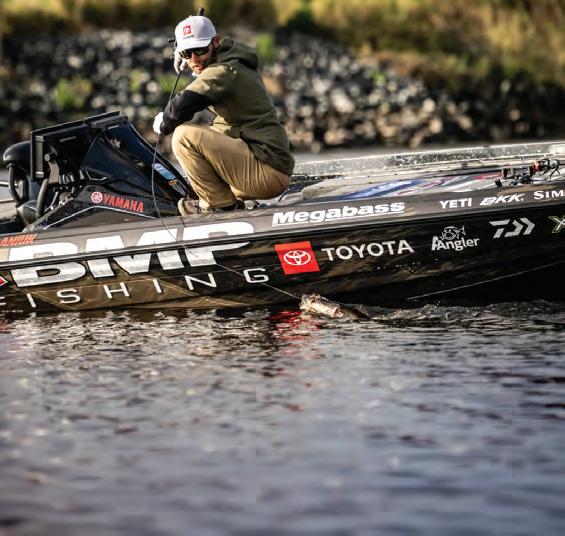
By Don Norton
If you’ve never been to Lake Okeechobee, it’s like shing in an ocean. With a surface area of 730 square miles, 135 miles of shoreline, and a length of 35 miles, it can be a bit humbling even to the top professionals who sh tournaments there. Hot spots abound. At one time or another, throughout the calendar year, virtually everywhere on the lake is a good shing area.
!e lake’s water levels uctuate 3-5 feet per year. !e normal water level in the winter ranges from 14 to 16 feet above sea level, and the normal water level in the summer months ranges from 12 to 15 feet.
As I write this article in mid-May, the water level is 11.17 feet above sea
level, unusually low for this time of year, creating many navigational hazards. It is expected to go even lower before the rainy season hits South Florida. What’s a sherman to do? !e lake becomes dangerous at this depth, and many of the best spots can be hard to get to.
Like many other anglers, I found the answer years ago.
!e Kissimmee River originally owed over 100 miles from Lake Kissimmee to Lake Okeechobee. !e waterway, part of the Everglades headwaters, was straightened and channelized into a 56-mile-long canal called the C-38 Canal in the 1960s for ood control. Restoration e$orts are underway to restore the river to its original meandering state and revitalize the ecosystem. !e depth of the river as it enters Lake Okeechobee ranges between 25 and 30 feet deep, o$ering an excellent opportunity for anglers to catch bass, crappies and bluegills. Other parts of the river can be as deep as 45 feet.
But it o$ers some excellent bass shing. Just ask Greg DiPalma, Brandon Palaniuk, Will Davis Jr., or Timothy Dube, four professionals who shed the 2025 BassMaster Elite Tournament on Lake Okeechobee earlier this year.
On Day One, shing in a small stretch of the C-41A Canal that ows southeast from Lake Istokpoga, DiPalma weighed in 29.12, Davis Jr., 26.2, Palaniuk 23.7, and Dube had 23.7. !e foursome was in rst, second, third, and 10th, respectively.
On Day Two, Palaniuk put two 8-pounders in the boat on consecutive casts, weighing in 34.10 for the day. He went on to win the tournament with a staggering 95.4 pounds, all caught in the Kissimmee River.
!is wasn’t the rst time an Elite series tournament on Lake Okeechobee was won on the Kissimmee River. Tyler Rivet won the event in 2023 a er nding an underutilized area of hard bottom spots, similar to the area Palaniuk and the others shed.
As Buck Perry used to say, “!e Home of the bass is deep water.” More and more anglers are proving that to be true.
Most of the locals will tell you, don’t overlook the river. As good as Lake Okeechobee is, the key in low water conditions, as well as other times of the year, is the Kissimmee River.
Don Norton is Co-Publisher of Coastal Angler Magazine’s Okeechobee edition. Contact him at (863) 273-4998 or don@theanglermagazine.com.



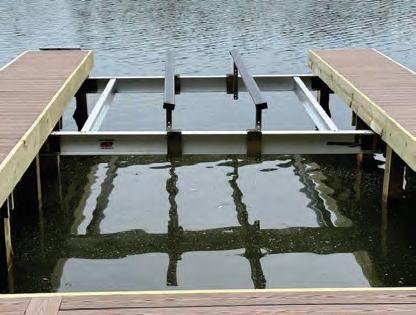




ShoreStation hydraulic boat lifts are a reliable choice for coastal residents and boating enthusiasts alike. Their strong construction, made with corrosion-resistant materials, allows them to withstand harsh environmental conditions, including sun, storms, and saltwater damage. ShoreStation provides a steadfast solution for protecting waterfront investments, o ering peace of mind to owners in the Sunshine State.
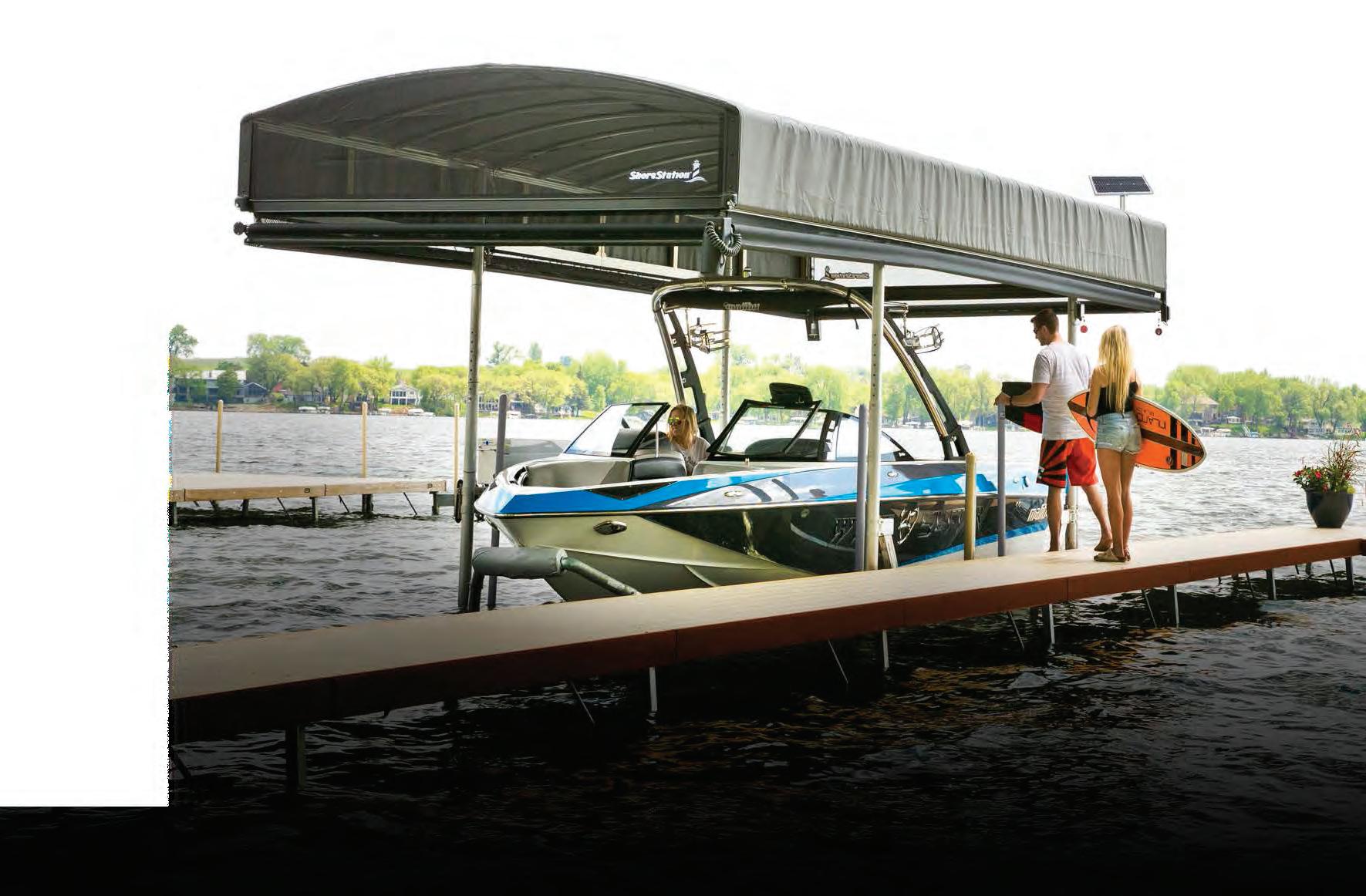







Equipped with exceptional weather resistant fabric and breathable SunTex 80 woven mesh ends for maximum protection and durability,

Made from the highest quality materials, our innovative hydraulic boat lift is one of the fastest and safest lifts on the market today. When you have a hydraulic lift, there’s no need to worry about wind and waves getting in your way. This lift will give you con dence to safely land and secure your boat in less-than-ideal conditions.
Never miss another moment on the water. Power your lift with clean, free solar power. Our speedy 20 watt charger features solar regulator drainage protection, saving your battery from permanent damage caused by overcharging.






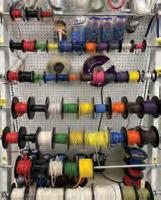

















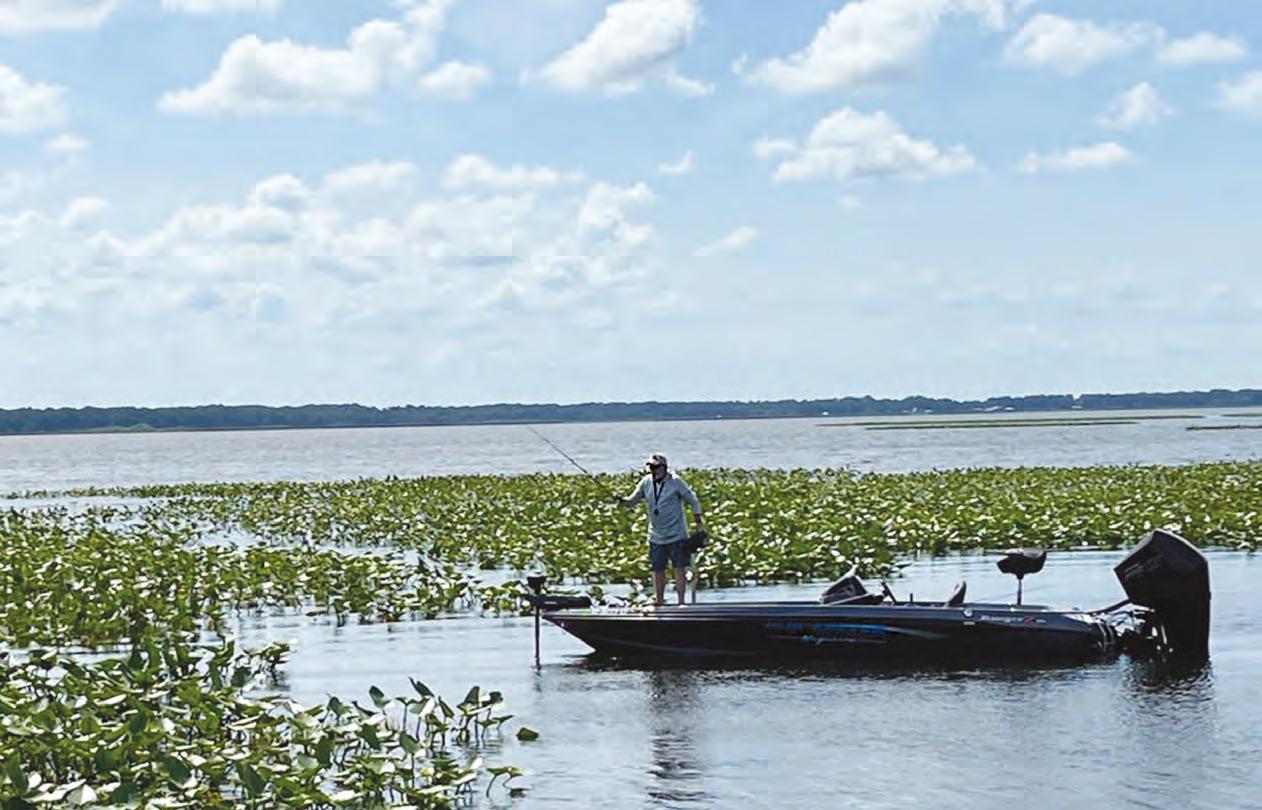


By Don Norton
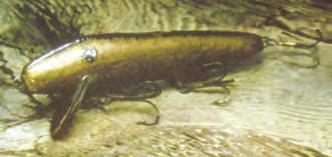
legendary name, Rapala.
Lauri Rapala, the founder of the Rapala empire, was born into poverty in a small Finnish village in 1905. He made his living as a farmer and a fisherman, selling his fish at the local market.
In 1936, after several modifications, Lauri Rapala designed the first Rapala lure, an 11 cm floating model that is still available today. By 1938, the first available lures were commercially sold in Finland. In 1945, the lure became available in two colors: silver (S) and gold (G).
The Original, as it has become known, was one of the first fishing lures that did not have a metal lip and a cartoon-like finish. The lure actually looked like a minnow. The workmanship and the appearance made all other lures look clumsy and childish. And it caught fish! Like no other lure ever created!
First introduced in the United States in the early sixties, the Rapala quickly became a “must-have” lure. When I was a teenager, my dad brought home two of the Original Rapalas—one silver and one gold. I couldn’t wait to try the silver one.
We weren’t disappointed. The original was a floater, and you could reel it fast or slow, allowing it to wobble its way back to you, or you could just let it sit, waiting for the rings of water to disappear before giving it a slight tug, causing
it to look like a dying minnow.
Every fish in the lake wanted to eat it, and we had an incredible day of fishing. My dad used the gold Rapala, which worked as well as the silver model. That was the start of my love affair with this incredible lure.
The story of Lauri Rapala is one of hardship, failure, and eventual success.

After being discharged from the army, Lauri attempted to revive his small lure-making business that had just begun to blossom before the war. He was sure he had found the secret to successful lure design. But because of the war, materials to make the lures were hard to come by. The pine bark was no problem – a useless byproduct of the forestry industry – but acetate, celluloid, and metal foils were strictly rationed. But he was a very resourceful man, and he managed to obtain the required materials or substituted other materials, like used film negatives, in their place.
No other lure has even come close to Rapala's hundreds of IGFA world records, and it’s unlikely any lure ever will.
By Brandon Baughman
It’s that time that we’ve all been waiting for as South Florida bowhunters. Archery season is upon us! For the die-hard bowhunters, the spots have already been picked. The archery equipment has already been gone through. The Bow is sighted in. The target bucks have been picked out and patterned now all that needs to happen is an opportunity! And in this moment of excitement and anticipation, there are some things that we can take from this as archers to make sure that our opening day is not spoiled, but successful.
One of them being patient. As an archer, you’re very familiar with patience, but in the heat of opening day, there needs to be a little extra. There’s a lot of excitement happening at this moment needing to hurry and get to the stand. Getting there before other hunters. Arriving before sunrise. In all this hustling bustle if you’re not careful, you could forget important things like not taking your release to the stand with you or forgetting your quiver of arrows. Just sit back and take a moment, doesn’t have to be a long couple of seconds even, just to make sure that everything is going as planned. It could save you from disaster! Patients before entering the hunting woods can be a huge asset for your hunting success
situation is calming yourself down once you get to your stand, settle down, get comfortable, breathe, and think every scenario through so that when a situation happens, you’ll be able to execute your shot flawlessly! Thinking of this now will pay big dividends during your hunt!
It can get trying at times for sure, but those that are going to be successful, are the ones that have got their brain on track!
The last thing I want to hit on is confidence! Confidence goes hand-inhand with mental stability. Think about it you’ve done all this scouting you set your stand in the place where you think it should go. You made plans on how to read the wind to get to your stand, you put thousands of arrows through your bow to make sure you’re good to whatever distance you feel comfortable shooting, you’re in the stand ready to go, and all of a sudden this little thought goes in your mind. Did I do this right? Did I sit in the right place? Could I really take a shot that far? All this doubt starts affecting you. An hour into your set, the sun starts breaking over the horizon and you don’t see anything, that doubt starts creeping in faster than anything. Don’t let it! Remind yourself of all that you’ve done to get to this point and stay confident that you’ve made the right choices. Whether your animal comes in on a string or you don’t see anything that day and yet you did everything you could to be ready. And if you’re one of the few on opening day and everything goes exactly the way it is supposed to, you can walk away with one more notch on your confidence belt which just builds a better foundation as an experienced bow hunter!
Considering that archery is 80% mental, and 20% equipment, if you’re mental game is not on that could spell disaster as well. You’re in the woods, trying to make sure everything is supposed to be where it’s supposed to be and then all of a sudden you have this giant buck standing in front of and your brain is going haywire. There’s a good possibility you may miss that animal. Buck fever itself is already a hard thing to get over, but if your brain is already excited it compounds the problem. A good remedy for the

Let’s face it hunting in South Florida is not for the faint of heart. Between the heat, and the bugs, trying to find your own piece of woods to hunt, not to mention the elusive South Florida deer that we have. It can get trying at times for sure, but those that are going to be successful, are the ones that have got their brain on track! Patience, calm, and confidence are just as important in taking to the woods as your bow arrows and your release! Here at Skull Hill Archery, we hope everyone who ventures into the deep woods is successful and if there’s any way we can help you whether it’s with your equipment or hunting advice we are here for you! God bless and happy hunting!!!!

We are a fully stocked Pro shop for all your archery needs. Including consigned and new bows.
• 20 yard indoor range
• 50 yard covered 3D range
Knowledgable bow techs


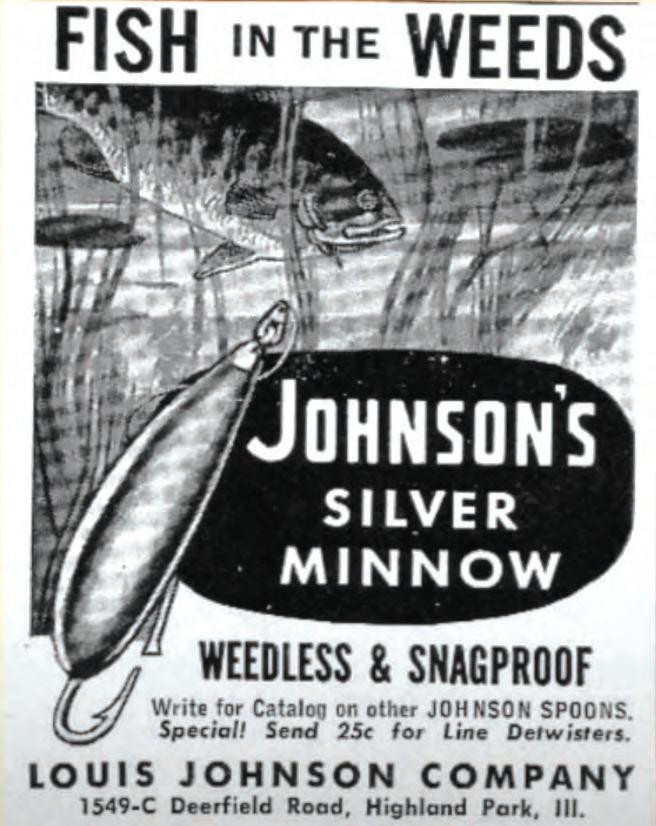
By Don Norton
The first time I ever used a Johnson Silver Minnow, I lost it! I was pretty young at the time, and I did what my dad told me to do. I cast it into the heavy lily pads and was immediately snagged. I pulled and pulled, and either the line broke or my knot pulled out before my dad could row us to where the lure was stuck. We looked everywhere for that spoon, but we never found it.
I felt bad because I knew we only had a couple of them, and I wasn’t sure you could even buy them in the little country store where they rented cabins. We were on vacation, staying at Sherwin's Cabins on Rice Lake in Ontario, Canada. We would take this same vacation every year for the next 15 years, and my dad always bought extra Johnson Spoons.
Along with the Jitterbug and the Johnny O’Neil Weedwing, the Johnson Silver Minnow was one of my favorite lures for bass. I loved the fact that it had a weed guard and would run perfectly through some pretty heavy vegetation. However, you did have to check the weed guard periodically to ensure it was in the correct position, guarding the hook.
The Johnson Silver Minnow is one of the most enduring and successful fishing lures of all time. It was invented in 1920 by Louis Johnson, a retired foundry operator from Chicago. Louis loved to fish, and his favorite lake was full of bass, but it was also full of weeds. Tired of hanging up in the vegetation, he decided to develop a fishing
lure that could glide effortlessly through the weeds and still catch bass.
Fishermen had been using spoons for some time with great success in open water, and he realized that if he could develop a type of weed guard over the hook, it might help it navigate through the weeds. He experimented with different strength wires, as the weed guard had to be strong enough to keep weeds at bay but flexible enough to hook a bass or pike.
He started experimenting with a spoon by cutting off the handle and soldering a weed guard to the concave side. He liked the idea of the spoon being made out of silver, and 105 years later, the Johnson Silver Spoon is still plated with real silver.
According to the Gettysburg Times, August 11, 1993:
Like other spoon lures of the day, the Johnson Silver Minnow was designed to imitate the flashing movement of a minnow. Other manufacturers had long incorporated flashing spinners into the design of their lures, but Louis Johnson’s new lure was the first to integrate a guarded hook onto the spoon, and the first to use real silver for a whiter, brighter flash than chrome of polished steel.

Johnson didn’t work with his “table spoon” very long before the learned something else about designing the perfect weedless lure: hooks that faced up were less weedy than hooks that faced down or spun around from the lure’s action. Even a guarded hook would catch weeds occasionally if it was retrieved with the hook facing down. Johnson reasoned that if he could figure out a way to ensure that the hook would always face up, the lure would be almost completely weedless.
Putting his years of foundry experience to work, Johnson decided to forge a spoon of a special copper/zinc alloy that was thicker in the middle than on the edges. With its weight concentrated along its centerline, this created a spoon that would rock back and forth as it was retrieved, but always keep the convex face down and the hook facing up. Other spoons of the day were simply stamped out of brass or steel. They often just spun through the water as they were retrieved. In fact, much of the Silver Minnow’s weedlessness can be attributed to the way in which the downward-riding spoon itself acts as a weed guard — and simply rides over weeds much like a water skier rides of the waves.
By getting the lure to keep its convex spoon side down and it hook up, Johnson also unwittingly made the lure visually effective under water. When retrieved, Johnson’s Silver Minnow rocks back and forth through a 270 degree angle, flashing reflections downs and to both sides, but not up. Since fish almost always attacked a lure from below or the side, there was no need for it to be visible from above. That meant that the lure could produce more flashes in the right directions per retrieve than stamped metal spoon lures.

Yet another benefit of the rocking spoon-down motion was that anglers no longer had to worry about line twist or special swivels. Spinning spoon lures used without swivels twist fishing line, and contribute to backlashes and tangles. To this day, Johnson Silver Minnows are manufactured with a simple soldered wire eye. Line can be tied directly to the lure without fear of line twist. The one exception would be when using the versatile Silver Minnow for” pike or muskellunge. Since even medium-sized pike will often inhale the entire lure, it is wise to use the lure with a short steel leader.
The Silver Minnow’s rocking motion also helps control the sinking rate when cast. Whereas many spoons simply dive to the bottom tail first, the Silver

It's summertime here in Southwest Florida. This time of year, the fishing opportunities are endless. There are so many different species of fish to pursue. Do you want to focus on the fish of a lifetime? Or would you prefer to go out and catch as many fish as possible? Do you want a few for dinner?
This is the time of year when the schools of tarpon move back up into the upper harbor. They have been out on the beaches and in the passes. Mating season has come to an end, so now it's time to feed. I strongly recommend getting an early start, preferably at first light. These guys tend to show their selves in the early morning hours. In the calm waters, tarpon can be spotted rolling on the surface. Many people confuse this habit with feeding, but these guys are taking in air from the surface. Expect other

anglers to be looking for fish also, so be as respectful as possible.
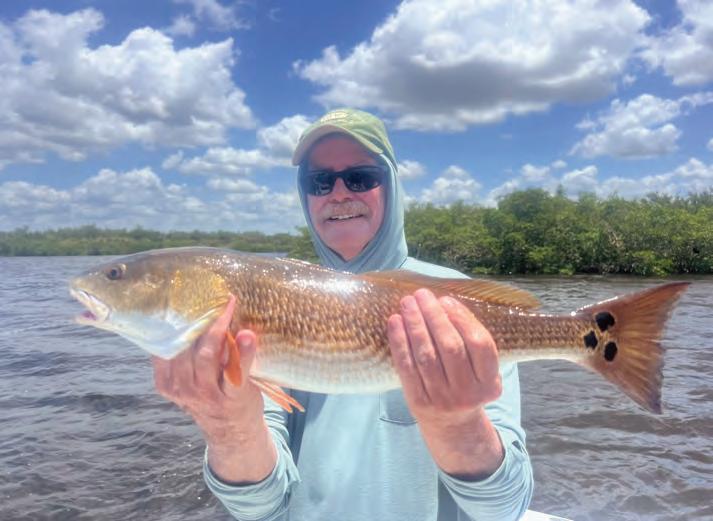
For the anglers who want to take a few fish home for dinner. Well, the mangrove snapper bite has been very good. These little guys can be tricky to catch at times. You may need to downsize your leader and hook size. If they seem a little spooky, try a 20# leader and a #1 hook. As the rains continue to fall, darkening the water, the fishing should pick up. The darker water helps with spooky fish.
Don't forget to keep an eye out for storms forming. This is the time of year when our afternoon storms can sneak up on you. So keep an eye on the sky and stay safe.
— Capt. Dave Stephens 941-916-5769 www.backbayxtremes.com

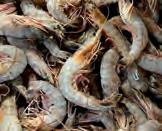







The spawn has been great this year on many bodies of water, which is awesome to see. As we start our summer fishing trips, I would like to share a tip to make any aged angler wellrounded.
My grandfather, Gerry Brousseau, has taught me to think and work outside the box to improve my bass fishing skills. At first, I wasn't a fan, but I soon realized that what he was doing was helping me apply skills that most people avoid. So I want to challenge all of you to try this yourself or with any younger fishermen you might be helping.

Look at a local map and find the lakes you have never fished before, and locate a ramp. Plan a day on that lake and set a goal of like five fish by 11 am. Head to the lake and take 20-30 minutes to drive around before starting your challenge. If you're like us, you enjoy fishing all day, so consider restarting your challenge after lunch, or better yet, try a nearby lake you've never fished before.






By Dan Echols
IRemember you have to think like a thief. These bruisers will eat shrimp, clams, sand fleas, and fiddler crabs, but beware... they will steal most of those right off your hook...
t takes a thief”. Does anyone remember that TV show? Robert Wagner was a professional thief, exercising his talents for the U.S. Government. He would rob people and they never even knew he’d been there. I’m here to tell you that ole Robert had nothing on a Sheepshead. As a young boy growing up on the banks of the Caloosahatchee River in south Florida, I was introduced to these “convicts” at an early age. I had a little 12’ john boat with a ‘57, 7.5 horse Evinrude and that river belonged to me. I had a spot where I could go and dig up river clams. My favorite place to the head to was the old ACL railroad trestle. The trestle, spanning the entire brackish river is sitting on hundreds of barnacle encrusted pilings. I would position my boat between the pilings on an out-gowning tied, in about 10’ of water, take my boat paddle and scrape off barnacles from the piling. I would then drop a clam down on a very small (but stout) hook, with enough weight to keep it in place next to the piling, and watch my rod tip. As soon as I saw the slightest downward motion, I would set the hook. When I first started this, I was getting broke off a lot as the fish would immediately go around the pilings and the barnacles would cut my line. Some of these were BIG fish. This is where I figured out how to out-smart a thief. I went to a tackle store and got a spool of 25#, plastic coated wire leader, wound the whole spool on my reel, and it was on. I pulled out many of these culinary delights over 10 pounds. Made my Daddy proud. Our freezer was always stocked with Sheepshead fillets.
By Don Norton
Both my brothers loved to hunt and fish. I think we all inherited that from my father, who taught us to love the outdoors from an early age. And each of us has passed that same passion on to our sons and daughters, in the hope that they’ll do the same.
My nephew Joey (he prefers Joe, often reminding me he’s not a little kid anymore) lives near the Gulf, and of all the third-generation kids, he’s probably the most passionate about fishing.

The best time to catch Sheepshead is in the cooler months in south Florida (winter and early Spring), but you can get them year-round if you can out-smart them. Remember you have to think like a thief. These bruisers will eat shrimp, clams, sand fleas, and fiddler crabs, but beware…they will steal most of those right off your hook, without your knowledge. My favorite is still the clams. They really don’t have to chew those. There are plenty of places near you that you can try. It’s a little different, a little specialized, but with some patience, well worth it at the dinner table. Tight lines my angling friends.
— Dan Echols, United States Army Veteran

Thirty years ago, I lived in Jupiter Farms, Florida, and I had a small lake in my front yard. During the first couple of years I lived there, I caught and released dozens of bass in the lake. There were so many I had to buy big bags of frozen smelt, every couple of days, thaw them out, and pitch them off my dock to feed the hungry bass.
One day, Joey came over for a visit, and of course, he wanted to fish in the lake. I dug out my new camcorder and started filming him as he caught one bass after another until I finally laid the camera down, realizing he was going to catch every bass in the lake before he was done.

I don’t get a chance to see him too often nowadays. He has his own family and responsibilities, but from time to time, he shoots me a text to check in with a few pictures of his recent catches.
He said he was catching some nice grouper and dolphins, but he wanted me to see the great picture his wife took of the five-foot tarpon that he had battled for thirty minutes before losing it.
Sometimes, the best memories are the fish we lose. I’m sure, one day, he’ll share that picture and story with his son.



By Doug Williams
If you collect old fishing lures, you, of course, have to have a special way to display your lures, and there is nobody any better to build a custom tackle box for you than Gene Meisberger of Yalhala, Florida, on the Harris chain of lakes.
Gene has been an active member of the Florida Antique Tackle Club (FATC) for many years, and if you attend one of FATC’s tackle shows, you will see Gene there, and if you take some time to get to know him, you will likely make a new friend for life. An experienced collector, author, restorer, and craftsman, the best thing about Gene is that he is simply a very nice person to be around. Gene’s interesting life will lead to many conversations about collecting old cars, hunting for special antique lures, restoring interesting houses, fishing for trophy bass, selling antiques, and restoring/ building custom tackle boxes out of unique American hardwoods.
Gene once told me that he started


making his custom tackle boxes because the wooden tackle boxes of the past were not well constructed and often made of cheap cuts of lumber. Gene likes to use beautiful American hardwoods like mahogany, maple, walnut, and cedar……especially if the wood has an interesting vein or pattern. Gene also likes to use leather, brass, or bronze to complement the natural look of the piece and sticks to matte finishes or oils that bring out the classic look of his work.
Since I own quite of few of Gene’s classic creations, I can tell you first-hand that each one is a special complement to the fishing lures they display, and each one is a conversation piece proudly displayed in my office or home.
If you would like to get in touch with Gene Meisberger or learn more about vintage, antique, or collectible fishing tackle, feel free to contact me via text or telephone at 305-926-7526.


Located on 2,000 acres of Florida bays, pines, palmettos, and oaks, outside the small town of Lake Placid, the Lightsey Family Ranch is perfect for the avid hunter and outdoorsman. Owner and lifelong hunter, Lee Lightsey, offers you to a one-of-a-kind hunting experience, including wild hog, quail, pheasant, turkey, deer, and alligator hunts. During your hunt you are welcome to stay at our lodge which features room for up to 28 guests, a large lobby with a true old Florida feel, and a full time Chef ready to prepare your meals.

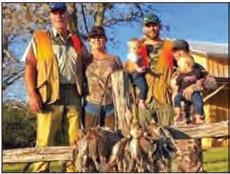
of

It’s an adventure that began for a young boy exploring the ponds and lakes of Branford, Connecticut, and the tidal estuary of the Long Island Sound. His earliest memory of fishing begins at age 5, when he would hunt for nightcrawlers in the misty predawn hours with his dad. For a young boy, the quest for bait was almost as exciting as fishing itself. With his bait container full, he could barely contain the excitement as they headed to Young’s Pond in hopes of landing the perfect bass. He clearly recalls the anticipation of waiting for that first strike, and then the battle between boy and bass would begin. He was hooked.


That memory would stay with him when he headed south to Florida as a young man. He settled briefly on the west coast before moving to central Florida to settle in Sebring, Florida, where he opened Jesse’s Auto Body. He met a Canadian girl who shared his enthusiasm for fishing, and once again, he was hooked. She would introduce him to the freshwater rivers and lakes of the Canadian Shield in northern Ontario, and the fishing adventures continued. Together they would fish Florida’s freshwater lakes, coastal flats, and the breathtaking Keys.









Earlier this year, they decided to capitalize on their passion, and Fish Candy Bait & Tackle was born. Located at 702 N Ridgewood Dr. in downtown Sebring, Florida. Fish Candy is open for business. 702 N Ridgewood Dr. Sebring, FL 33870 863-658-1686
Summer Hours: Monday - Friday 7am-5:30pm Saturday 7am-3pm







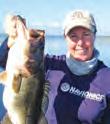

Lake O’s water level has been hovering around the 11 ft mark for the last few months. Lower water levels while navigating the lake are hazardous, and one must know the body of water and the reasons why most Anglers choose to stay in deeper water areas, such as the canals and the River system.
I’ve been taking my clients/ trips out on the lake and fishing the River. A lot depends on what they want to fish for and how, and both have been producing big bass and bluegill. Many bass are being caught using live shiners in the River, but options for doing so are limited. The most suitable areas are drop-offs and rock ledges, which can be fished with floats and no sinker due to the rocky bottom and lack of vegetation, resulting in open-water fishing.
For the last few months, I have been taking artificial lure trips for bass, throwing big worms in some areas of the River, and customers are landing their personal bests (PBs)!! May/June has always been a big bass time of year, so book your next exciting fun day of fishing.
Big bluegills are being caught using a multitude of baits, such as red worms, crickets, and grass shrimp, all rigged on ultra-light 7-foot spinning gear using 4-pound line. The kiddos love the fast and non-stop, exciting action of reeling in fish, and they can take their catch with them and enjoy a great-tasting meal.
Crappie are being caught early in the morning and again in late afternoon, mainly around bridge pilings, drop-offs, and ledges, using minnows and lures for jigging, such as curly tails and tubes.



If you’re interested in getting to know the lake, learning fishing tips, and catching bass and/or bluegill, now is the time to book your trip. I can accommodate groups, one-person trips (with a discount available), VET discounts, and multi-day trips. The time we start in the morning depends on your schedule and the duration of time you prefer, such as a 4-hour, 6-hour, or even a split-day of fishing. I also offer deep hotel discounts at the newest, best hotel in Okeechobee. I can recommend a great local restaurant and offer nearby “other” attractions that are fun for the whole family! If you have questions, no problem, give me a call at (863)2287263 and we can discuss your trip or you can check out my website www. southfloridabassfishing.com where you’ll find up-to-date customers with their catches; past fishing reports; toll free number to purchase a fishing license; what to bring; what I provide for my customers, etc. My Sponsors include: Toho Marine, Mercury, BnM Poles, Bullet Weights, Gill, G-Loomis, Lews, Navionics, Mid-South Tackle, Gene Larew, and Pradco Brands.
— To book you’re next fun day fishing, call 863-7263 or check out my website, where you’ll see up-to-date info, customer catches, hotel info, past reports, and more www.southfloridabassfishing.com. I can accommodate groups of people; I offer Veteran and one-person discounted trips. Inquire when calling to book.
A big thank you to my sponsors: Mercury Marine; Toho Marine (St. Cloud, Fl); Bullet Weights; G-Loomis; Lews; BnM Poles; Bobby Garland; Rapala; Gill; Gene Larew; Lurenet.com




By Sara Menendez
Does the FWC keep records of the largest bass, bluegill, or crappie caught in Lake Istokpoga? If not, what is the largest bass, bluegill, or crappie submitted to the FWC TrophyCatch program?
There are two approaches to answering this question. The first are through angler-reported data, known as our BigCatch and TrophyCatch programs. These are great citizen science tools, where anglers can help inform fisheries biologists of their awesome catches! FWC will award those who successfully report a BigCatch or TrophyCatch fish. For our angler-reported fish, the biggest Florida bass caught and approved on Lake Istokpoga was from Adrian Echols in 2018. He landed a 13lb 14oz bass with an artificial lure. The biggest bluegill reported through our BigCatch is a 14-oz fish caught by William Fryer in 2017. BigCatch also reports that the largest crappie caught was 2lb 4oz, caught by Victoria McMullin back in 2005. Photo documentation of all these catches can be found on either FWC’s TrophyCatch or BigCatch website.
If you catch a fish that you know qualifies for BigCatch or a Florida bass over 8 lbs that qualifies for TrophyCatch, please upload your submissions! You can find the details at the BigCatch and TrophyCatch websites.
The second approach to this question involves utilizing FWC’s Long-Term Monitoring program dataset, which was collected through standardized sampling techniques. These are data that is collected through either trawl or electrofishing. Biologists who have managed Lake Istokpoga will conduct yearly electrofishing and trawling to collect fisheries data. Data show that the largest Florida Bass was caught while electrofishing in February 2014 and weighed 11 pounds 9 ounces. The largest crappie, weighing 1 pound 10 ounces, was caught by electrofishing in October 2017. The largest bluegill, weighing 1 pound 15 ounces, was caught by electrofishing in October 2006.
It’s always interesting to see what our dedicated anglers are catching on the lake and how it compares to what biologists observe in the lake. Enjoy the summer sun and tight lines!
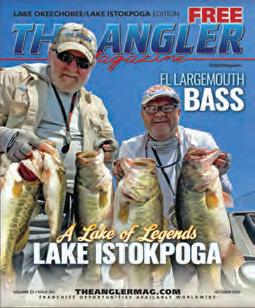










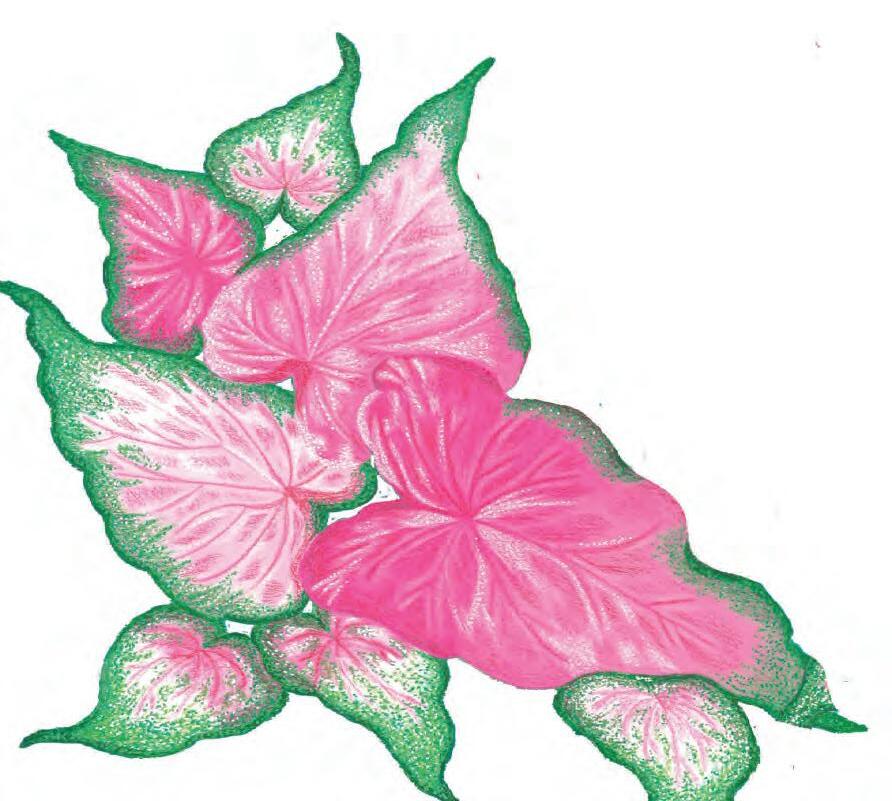





Stepping outside their usual territory along the Lake Wales Ridge, Ridge Ranger volunteers recently assisted with a habitat restoration project at Little Gator Creek Wildlife and Environmental Area (WEA) in Dade City, FL. This marked a special collaboration with another Florida Fish and Wildlife Conservation Commission (FWC) property northwest of their typical range.




Rather than their familiar task of felling Sand pines to support Florida Scrub-Jay habitat, Ridge Rangers focused on clearing midstory vegetation around a wading bird rookery, which historically attracted nesting wood storks. Their objective was to open the midstory within a cypress swamp by removing non-cypress tree species. This work helps increase sunlight to the ground, improves hydrology, and limits predator access—benefits crucial to the wetland’s health and the nesting success of wading bird species. The hope is that the midstory thinning will make the Little Gator Creek WEA cypress swamp attractive to more nesting wood storks.
Timing was ideal: just after the stork nesting season and ahead of Florida’s heavy summer rains, which would render the site inaccessible. The Ridge Rangers’ efforts reflect the importance of volunteer support in maintaining Florida’s unique ecosystems.
For more information on volunteer opportunities and habitat restoration projects, contact Jonathan Foligno, Ridge Ranger Volunteer Program Biologist, at Jonathan.Foligno@myfwc.com.
— Ridge Rangers and FWC biologists plan to continue this work at Carter Creek through March. For more information about volunteering for these workdays, please contact Jonathan Foligno at Jonathan.Foligno myfwc.com.








As September rolls into South Florida, the heat continues, and it has been a hot summer for sure. The fishing on Lake Okeechobee has been pretty good in spite of the heat and high water temperatures. We are still getting out early while it is still a little cool out and then getting off the water when it gets hot. Once we get through September, it will start to cool off a little in October, and the fishing will improve by the day.
We are still doing the summertime thing of fishing the outside grass line in most areas, with the best for me being from Clewiston up the shoal to Whiddens Pass. The fish have been pretty scattered, but when you do find some, there seems to be more than one in the area.
I have been catching bass on a Gamber Fat Ace fished real slow, and I mean almost asleep slow. There has been a little topwater bite early when I start in the morning, try frogs in the grass and Zara Super Spooks out in open water if you see bass chasing bait. There has been some shad on the outside up the shoal, and when you find them, the bass won’t be far away.
They are still spraying vegetation on Okeechobee even though there just doesn’t seem to me to be anything left to spray. I just can’t seem to wrap my head around the fact that the FWC and the state of Florida are hell-bent on destroying Lake Okeechobee and most other lakes in Florida. It is time the governor and other state officials started caring about all the resources of Florida and not just the coasts.
The guides and the fishermen have been to the meetings and have had their say, but no one seems to want to listen.

I am looking forward to a great fall, winter, and spring season here on Lake Okeechobee, and the fishing will be great as always. Now is the time to start booking those trips, as dates do fill up quickly. Until next month tight lines and bass wishes to all. www.markkingfishing.co
— Capt. Mark King www.markkingfishing.com | 863-677-0983

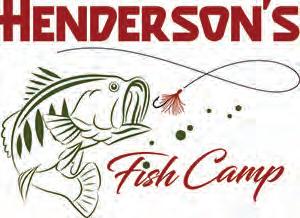




As the Florida fishing season heats up, two young anglers are making waves both locally and statewide. Lowry Dean and Zack Marine, representing Highlands County Anglers, are closing in on their first full year fishing together—and what a season it’s been. This dynamic duo has not only proven themselves on local waters, but they’ve also earned the respect of the competitive bass fishing community across Florida.
Hooked on Success: State Championship Bound
Lowry and Zack have punched their ticket to the Florida BASS Nation State Championship, set to take place this June on the storied Harris Chain of Lakes. Their consistent performance and teamwork on the tournament trail have secured their place among Florida’s best high school anglers. The Harris Chain, known for its big bass and strategic challenges, will be the proving ground for the top teams in the state—and Lowry and Zack are ready to bring their A-game.
Casting Toward Nationals: From Seminole to Clarks Hill
Earlier this season, while competing on the North Trail of the Florida BASS Nation on Lake Seminole, the pair clinched a major milestone—a coveted spot at the 2025 Bassmaster High School National Championship. This prestigious event will be held at Clarks Hill Lake in Georgia at the end of July and will feature the top high school anglers from across the country.
Fueling the Dream: Fundraising and Sponsorship Opportunities
Competing at this level takes more than talent—it takes resources. Lowry and Zack are currently fundraising and seeking sponsorships to help cover the costs associated with travel, lodging, gear, and tournament fees. Their passion for the sport is matched by their dedication, and the community has a chance to be a part of their journey.
If you’re a local business or individual who wants to support promising youth anglers and get your brand seen at state and national levels, now is the time to get involved.


You can follow Lowry and Zack’s fishing journey, tournament updates, and behind-the-scenes moments on Instagram: They’re also currently running a “Long Day of Fishing” raffle—a fun and engaging way to support their goals while getting the chance to win a great prize.
Whether you’re an avid angler, a local supporter, or a fan of youth sports, keep your eyes on this rising team. Lowry Dean and Zack Marine are reeling in more than just bass—they’re reeling in big dreams, one cast at a time.
For sponsorship inquiries or raffle details, reach out via Instagram or contact Lowry’s mom, Candis Dean via email candisddean@gmail.com or 863.381.1983. Let’s help these boys make waves on the national stage!
We are Lowry Dean and Zack Marine, sophomores in high school and on the Highlands County Anglers Team. We have been competing in FL B.A.S.S. Nation tournaments all year and have qualified for the B.A.S.S. Nation State and National Championships. We will be competing against the top anglers in the country!
We are looking to reel in some support to help get us there. All sponsors will receive recognition on our social media. National Championship sponsors will also have their logo on our jerseys (limited spots). These sponsorships help cover our travel and expenses for the tournaments. Please consider the sponsorship opportunities below:
Any and all support is appreciated. Every dollar helps, just like every pound!
• $500 Sponsorship to support State Championship on Lake Okeechobee, FL
• $1,000 Sponsorship to support National Championship on Clarks Hill Lake, GA
Sponsorships paid directly to either Lowry Dean or Zack Marine
If you’re hooked, please contact us. Thank you for your consideration and support! Lowry Dean Zack Marine 863-991-3189 863-991-3156 Instagram @lowrydean_fishing Instagram @zackmmarine
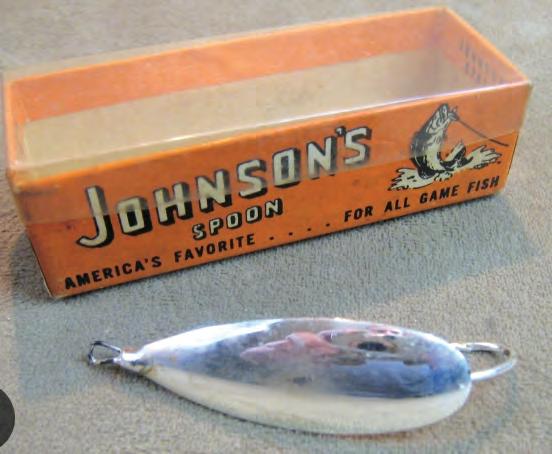
Minnow gently drops horizontally, rocking in its characteristic motion. This gives an angler ample time to take up the slack after cast and begin the retrieve before the lure has had a chance to bury itself in weedy cover, or behind a log. This feature also makes the lure effective the second it touches the water. Many strikes on the Silver Minnow come as the just-cast lure is rocking gently toward the bottom.
The Johnson Silver Minnow is a deadly lure when fished plain, but when it is combined with a trailer, it is especially effective in triggering strikes. In addition, the Silver Minnow’s unique rocking

motion is not affective by a trailer like many other spoons are.
For traditionalists, a pork rind trailer of red/white or yellow/white is one of the best combinations. Adding a red 3-inch waving tail imitates the red gill rakers that would show on a wounded or distressed bait fish. This works like a visual “dinner bell” to a predatory fish, who would rather attack a slower, “wounded” fish than try to catch a fast, healthy one.

But red is not always the color of choice. Often some experimentation is needed to find out what color of trailer will be working on that day, in that lake, on that particular species of fish in that particular kind of cover. Newer plastic trailers are more convenient than the traditional pork rind, and can be carried in a great variety of colors with less weight and bulk. Soft plastic Silver Minnow Trailers in a variety of colors, are now marketed by Johnson Fishing for use with all Silver Minnows.

The Johnson Silver Minnow is still manufactured in the same way it was in 1920 — by hand — and still plated with real silver for the brightest possible underwater “flash.” Originally manufactured in Chicago by the Louis Johnson Company, the lure was purchased by Johnson Fishing Inc. of Mankato, MN in 1974. In 1976, manufacturing facilities were moved to Johnson Fishing’s Bass Buster Lure division in Amsterdam, MO. The Silver Minnow continues to be one of the best selling lures of all time.


If you haven’t visited Gallatis recently, you might be surprised to see it has changed its name to the BIG ITALIAN.
Looking for authentic Italian pizza? Well, you’ll find it here. They’re also known for their BIG pizza’s.
C’mon in and meet the owners, Adriane and Edward. They may be in the back cooking, but they’re always happy to come out and meet their customers.
Great Pizza, Great People. Stop in and check it out for yourself.

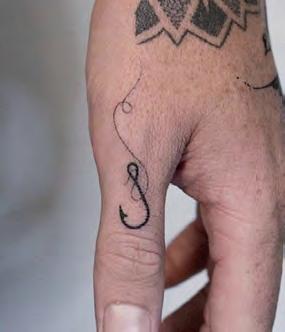
By Don Norton
Is the Florida fishing season heats up, two young anglers are making waves both locally and statewide. Lowry Dean and Zack Marine, representing Highlands County Anglers, are closing in on their first full year fishing together— and what a season it’s been. This dynamic duo has not only proven themselves on local waters, but they’ve also earned the respect of the competitive bass fishing community across Florida.
I have a small lake that sits literally in my backyard. It was the most significant selling point when we bought this house years ago. I always thought it would be nice to “live on the water,” and back then we looked at houses on Lake Istokpoga, but everything was just too far from shopping, doctors' offices, and everything else. (Or, at least that was my wife’s opinion).
But this was different. It was a small lake in a golf course community with friendly neighbors. The only problem was, there didn’t appear to be any fish in the lake.

I built a small dock and fished every opportunity I had, and rarely got a bite, let alone caught a fish. Initially, I tried to catch a bass, utilizing my exceptional fishing skills and equipment, only to come up empty-handed. Then I figured there had to be bluegills in the lake, so I tried crickets, minnows, and worms. Nada.


lake had been poisoned, since there didn’t appear to be any fish in it. He just laughed and said no, it had plenty of bass and bluegills, that I should keep trying.
One day, while feeding my aquarium fish, I was fascinated by the fact that they seemed to recognize me and eagerly came to the top of the aquarium, awaiting their food. Then it hit me! I just needed to feed the fish in my lake.
I drove down to Glisson’s Animal Supply in Sebring and asked if they had any fish food. I was surprised to find that they had several different kinds. One was a floating catfish food while the other was for gamefish. Both were large, heavy bags. I bought them both, took them home, and mixed them together in five-gallon buckets.
That night, I went out to the dock and scattered a couple of handfuls of fish food across the surface. I waited, but no fish appeared. The second night, I met with the same results. But on the third night, an incredibly calm evening, without a ripple on the surface, I threw the food out as far as I could, and I waited. Once again, nothing.
But as I turned to walk away, I heard a splash. Then another. Suddenly, as I turned to face the water, the surface erupted. Bluegills were everywhere, hitting the surface and snatching the floating food.
That was several years ago. To this day, I still feed my fish every night, and every night they’re there waiting for me. Bluegills, tilapia, and bass are thriving on the fish food.
We occasionally fish off the dock and catch large coppernose bluegills in the 10-11 inch range, with the occasional 12-inch monster. We’ve caught tilapia over eight pounds and a couple of bass over ten pounds that appear to follow the bluegills only to eat one for dinner.
Finally, I asked a neighbor who was on the homeowners board if the
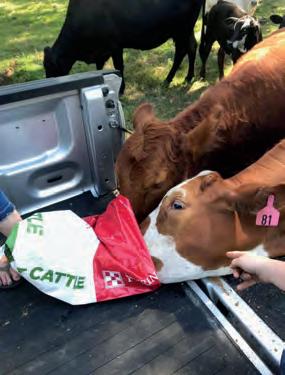
If you live on the water and you want to grow some big, healthy fish, get yourself some fish food from Glisson’s Animal Supply at 4525 US Highway 27 in Sebring.







By Don Norton

Last year, in May, I had the opportunity to join Sara Menendez, David Holmberg and Beacham Furse, along with a couple of crews from FWC to view the habitat restoration project taking place on Lake Istokpoga, and to write this article for the Angler Magazine, June issue.
Sara Menendez is a Fisheries Biologist, with the Florida Fish and Wildlife Conservation Commission, Southwest Region, headquartered in Lakeland, Florida. She has also written for and provided information on various articles in the Angler Magazine. My neighbor, and another contributing writer to the magazine, Robert Fromhartz – a Master Gardner – also came along to see the progress they were making.
We met Sara around 9:00 am at Windy Point, the large state boat ramp on the southwest corner of Lake Istokpoga and within ten minutes, we were running across the bottom of the lake to the east shoreline where we would meet up with David Holmberg, just south of the Istokpoga Canal.

David Holmberg was the newest AHRES (Aquatic Habitat Restoration and Enhancement Section) biologist to be involved with this planting. He is still with the FWC in another position and Alex Seasholtz is now the AHRES biologist for Lake Istokpoga. He will be the one proposing new habitat restoration projects that the Lake Istokpoga Working Group (team of FWC biologists from all concentrations) will provide comments on and approve to move forward.
Plans are being finalized to restore the scrub and wetlands habitat that surrounds the Windy Point boat ramp on Lake Istokpoga. This is a unique and diverse ecosystem, populated with endangered plants and wildlife that is currently threatened by invasive plants. The Windy Point Scrub Restoration Project will encompass the removal of invasives, planting of natives, restoration of the wetland area, relocation of selected aquatic plants, and installation of educational signage. The project will be led by experienced FWC biologists representing The Ridge Rangers and FWC’s department of Aquatic Habitat Conservation and Restoration. Volunteers are needed to complete the field work, assist with food preparation, and provide
As we idled into the shallow section of water, past the outer edge of spatterdock and scattered arrowheads, I was surprised at the depth of water. Usually, the water is too shallow for me to get my Ranger Bass Boat this close to shore, but the water was deeper than I thought and we moved slowly into the shallows.

Twenty-five feet from the planting crew, I lowered the power poles to hold us in place as David waded across knee-high water to meet us. At least a half-dozen workers in orange shirts were busily planting Duck Potato plants along the shallower water towards shore.
David explained that this location was a good choice for inner marsh areas.
The Wapato Duck Potato is a very good all-around wild duck food Canada geese, swan, and all ducks. The species of wild ducks which will feed upon Wapato depends largely upon the water conditions under which it grows. If the waters remain nearly the same level the year around, mallards and other shallow water ducks will feed upon the tender shoots, tubers and seeds which it produces.
A common wetland plant, the Wapato is also known as broadleaf arrowhead, arrowleaf, duck potato, and Indian potato. The tubers of broadleaf arrowhead have long been an important food source to indigenous peoples of the Americas. The Lewis and Clark expedition depended on the plant when they were in the Columbia River basin. It produces starchy tubers which were an ethnographically known food source for native groups throughout much of North America.
It's also one of the easiest plants to get started. We watched as the workers
project management support before and throughout the project. The first phase of this project will begin in July.
Plans are also being finalized to resume planting of native aquatic plants in Lake Istokpoga. The Istokpoga Planting Program was initiated a few years ago with over 140,000 plantings of species such as jointed spikerush, maidencane, and duck potato. Volunteers are needed to help FWC biologists’ plant in pre-selected areas of the lake. The next planting cycle for this project will begin in July.
If you would like to volunteer to be part of either of these fun and educational projects, please contact Doug Williams (The Istokpoga Alliance) on 305-926-7526 ( via phone or text) to register.

used a spade to lift up the bottom sediment at an angle, while sliding the root base into the sliver of a hole, and releasing the contents back over the roots. It is a favorite of ducks and geese, and bass fishermen. It will grow in a damp muddy soil to 2 feet of water. It is an emergent that grows 2 to 4 feet tall. Ducks and geese will eat the tubers of the plant. It is also a favorite of muskrats.
As a bass fisherman, I love to fish the arrowheads, particularly during the spawn. Bass love the leafy plant and the protection it provides and will often build their nest just inside the cluster of plants. It also provides a safe haven for the freshly hatched fry.
We spent quite a bit of time with David, as we watched the planting team cover a great deal of shoreline planting the vegetation. Sara received a phone call from Beacham Furse to let her know that he was leading another team across the lake to the bottom of Bumblebee Island. We thanked David for the time he spent with us and slowly moved out into deeper water.
The wind had picked up and the water was a little rougher as we headed west, looking for the second planting team coming out of Windy Point. As we crossed the south end of the lake, we spotted Beacham in an airboat, just off the south end of the island in a scattering of spatterdock.
Beacham Furse has been working on Lake Istokpoga for the last 25+ years and has served in various roles. He started out as the fisheries biologist when he first started, moved to the AHRES biologist, and now is in a more administrative role within AHRES. He still enjoys getting out on the lake and his wealth of knowledge on Lake Istokpoga goes back almost as far as mine. He's actively seen how much the lake has changed over the last 25+ years with various natural disturbances, developments, and just overall natural variations.
I had met Beacham many times in the past, and he is incredibly knowledgeable about Lake Istokpoga. We talked about what the lake looked like back in the 90’s. I asked him about the hydrilla that used to be in the lake. “Yeah, I remember the mid-to-late 90’s when the lake was full of hydrilla,” he said, “and I remember how much the fishermen loved it! But for every fisherman who loved fishing in the fast-growing, invasive plants, there was another voice raising concerns about how difficult it had become for small craft owners – often fishermen in small boats with small outboard engines –to move around the lake,” he continued.
I remembered as well. Guides like Don Hatcher and Remo Beaver were logging in catches of 50-100 bass a day on live shiners, and even guides like myself, fishing with artificial baits were catching 20-25 bass in a single outing. We couldn’t help but love the huge expanses of hydrilla and the large number of bass it seemed to attract..
But even back then, I realized, a plant that can grow up to an inch a day, producing large mats of vegetation that grow along the bottom of the lake and eventually reach the water’s surface, topping out, can spell problems for gasoline outboard motors. These mats can become several feet thick, shading out and eventually replacing native plants that provide food and shelter to native wildlife.
I could have talked with Beacham for hours about the lake and my own experiences, but I was here to learn more about aquatic restoration of the lake.
As we idled up to talking distance from the airboat, I asked what they would be planting in this section of the lake. “Eel grass,” he said, “13,000 pots of eelgrass. And each pot has four eel grass plants in it, so we’re actually planting 52,000 plants,” he replied, with some satisfaction.
Again, my first thought, as a bass fisherman was, “I love fishing in eel grass!”
Eelgrass provides a number of important ecosystem functions, including foraging areas and shelter to young fish and invertebrates, food for migratory waterfowl and sea turtles, and spawning surfaces for species such as the Pacific herring. By trapping sediment, stabilizing the substrate, and reducing the force of wave energy, eelgrass beds also reduce coastal erosion. In fact, eelgrass forms the base of a highly productive marine food web.
The unique habitat also produces food and oxygen, improves water quality by filtering polluted runoff, absorbs excess nutrients, stores greenhouse gases like carbon dioxide, and protects the shoreline from erosion.
Many people are unaware of the importance this plant plays in the marine environment. As a result, there has been significant degradation of eelgrass, primarily from human impacts such as urban development, dredging, pollution, and sediment runoff from upland areas.
Eelgrass along the bottom provides foraging areas and shelter for fish. NOAA photo by Adam Obaza. One of the workers waded across to our boat to show us what the plants look like before they’re planted. I was surprised at how quickly the team moved along the shallow waters planting the eelgrass along the way.
“Don’t you worry about being attacked by an alligator,” I said, halfjokingly. “No, we’ve never had an incident involving an alligator,” she replied, “because we all stay pretty close to each other and we all keep our eyes open to our surroundings.
One interesting observation that Beacham shared was the fact that eelgrass will actually keep hydrilla out.
As we talked, I learned that the 4” pots the plants were in were biodegradable and consisted of 75% sand and 25% organic soil. We continued to talk about a wide variety of plants, both invasive and naturally occurring, and it was soon lunch-time, so we headed back to the boat ramp.
I know there are many, many anglers, as well as other stakeholders who share my love for this beautiful lake, and on behalf of everyone, I want to thank Sara, Johnathon and Beacham for their time, their expertise and their passion for what they do.






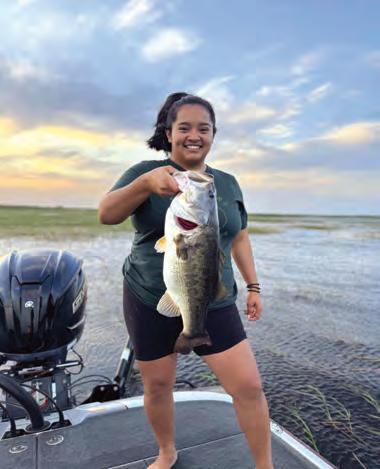





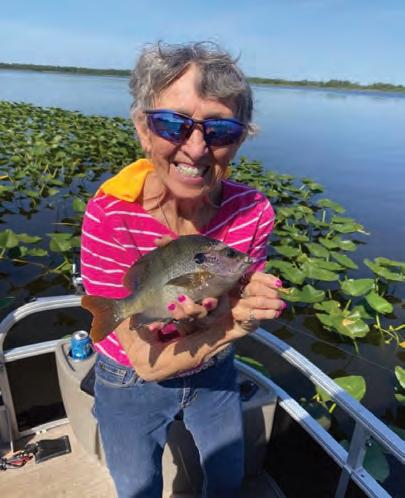




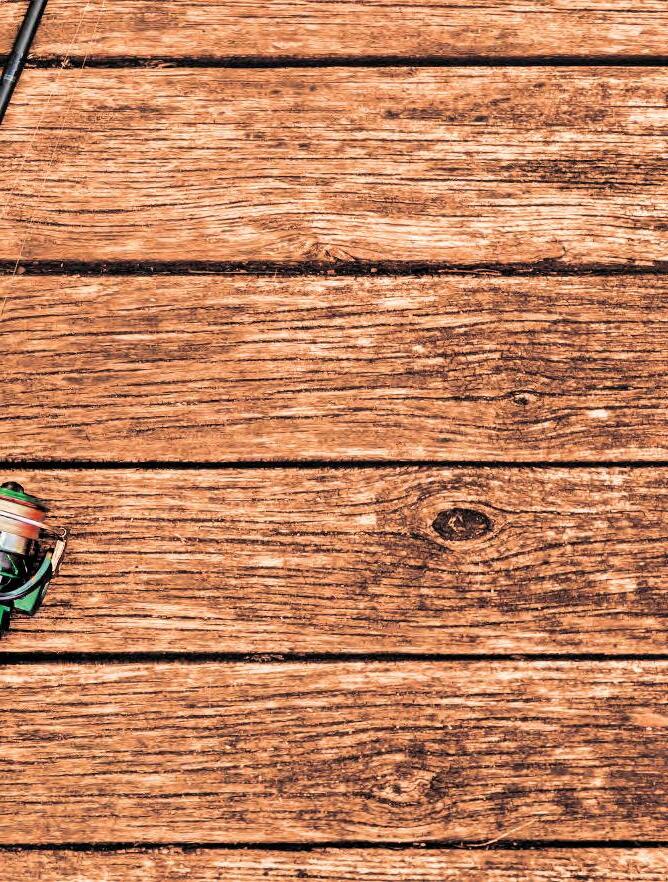



Avon Park Chamber of Commerce ............28 E Main St
Wild Turkey ................................2751 US Highway 27 S
Palmer ACE Hardware ..........................415 W Main St
Williams Pawn & Gun .............................937 W Main St
Pure Grit .................................................907 W Main St
Hendricks Corner Bait Shop ..............202 East Main ST
Layes Tires 1092 Locke Street
Bill Jarrett Auto ........................1305 US Highway 27 N
Big T Tires .....................................1109 W Main Street
Huston Chevrolet .........................650 US Highway 27 S
Dennys ........................................................4390 US 27
Huston Dodge Jeep ..................................2750 US 27S
The Western Cut .........................................500 W Main
Sebring Chamber of Commerce .. 202 Circle Park Drive, Beach House Books & More ........3210 Physicians Way
Grateful Hearts ...................................330 US Hwy 27N
Schooners BBQ ............................... 4908 US Hwy 27 S
Truist South (Publix) ................. 3012 US Highway 27 S
Sherwin Williams ...........................1132 Lakeview Drive
Sebring Toyota ............................404 US Highway 27 N
Hibachi Japan ...........................2870 US Highway 27 N
Musselmans ............................4230 US Highway 27 N
Highlands County YMCA ...................... 100 YMCA Lane
Allen Jay Chev...................................441 US Hwy 27 N
Allen Jay Nissan ..................................1700 Flare Road
Allen Jay Ford..................................5330 US Hwy 27 S
Food for Thought ...............................315 US Hwy 27 N
Caddy Shack .....................................3122 Golfview Rd
Triangle Hardware ...........................3129 US Hwy 27 S
Marathon Bait Shop .........................3641 US Hwy 27 S
Mid Florida CU (South) ....................3686 US Hwy 27 S
Glisson Animal Food Supply............4525 US Hwy 27 S
Taylor Rental....................................4611 US Hwy 27 S
Mid Florida Truck Parts....................6203 US Hwy 27 S
Watering Hole ..................................6813 US Hwy 27 S
up a copy of
Glades Pawn ...................................7423 US Hwy 27 S
The 301 ........................................301 Circle Park Drive
Gator Shack..................................4651 US Highway 98
Speak Easy / Golf Pro Shop .............100 Clubhouse Ln
Seven Hotel .......................................150 Midway Drive
Regional Airport/runway Café 128 Authority Lane
Spray & Pray ..............................12135 US Highway 98
Okeechobee Outfitters.............5260 Bluff Hammock Rd
WAWA 3838.......................................................US 27S
McPhails Auto ..........................................4163 US 27 S
Country Club Golf Pro Shop .........4800 Haw Branch Rd
Cowboy Cafe 98 BBQ ...............................12906 US 98
Big Italian Pizza .................................637 S. Commerce
Jesse's Auto Body ........................702 N Ridgewood Dr
Fish Candy ...................................702 N Ridgewood Dr
Lake Placid Chamber of Commerce...............18 Oak St
Lake Placid Western Wear ........................417 US 27 S
Lake Placid Historical Society & Museum .....19 Park St
Carlie Lynns Bar .......................................9119 US 27 S
ButtonWood RV Resort .........................10001 US 27 S
Boaters World ............................................730 US 27 N
Chamber of Commerce ..................................18 Oak St
Hartzels Grocery Market.................350 E Interlake Blvd
Tractor Supply Company .......................... 60 Plaza Ave
Lake Placid Marine ....................................310 US 27 S
Big T Tires LP ................................................624 US-27
Tabbys Bar & Grill ..........................................800 US-27
Hendersons Fish Camp ...................... 35 Henderson Rd
Zee's Barbershop ...........................212 E Interlake Blvd
Tony's Barbershop ..........................241 E Interlake Blvd
Okeechobee Chamber of Commerce ...55 S Parrott Ave

By A. deGruchy
For two days every July, Florida’s coastlines, especially in the Keys, come alive with divers, snorkelers, and boaters all chasing one thing...spiny lobster. !is short window, known as Lobster Mini Season, is a chance for recreational shers to get in the water and collect lobster before o cial season begins on August 6. It is fast-paced, competitive, and incredibly rewarding if you know what you are doing.
Mini Season always falls on the last Wednesday and !ursday of July. It is a long-standing Florida tradition and one of the most exciting events of the year for local divers and visitors alike. But it is also highly regulated and o$en chaotic, so the di erence between a great haul and a frustrating day o$en comes down to preparation.
To start, you’ll need snorkeling gear, a legal lobster gauge, a dive &ag, net and tickle stick. !e best nets are the “Lobster Florida Nets” by Brook Crist. !ese nets are lightweight, easy to handle in the water, and extremely e ective when it counts. When it comes to nding lobster, structure is everything. In the Keys, ledges and rocky crevices are prime spots. Look for antennae sticking out from under the ledges. Lobsters o$en cluster together, so if you nd one, there are likely more.



!e water depths also vary anywhere from 3 feet to much deeper, from 20 feet and beyond. To catch them, approach slowly from behind, use your tickle stick to gently coax the lobster forward, but never grab from behind as they’ll retreat deeper. When the lobster begins to walk, quickly position your net to block its escape. It’s important to note that spiny lobsters swim backwards when threatened, so your net should be placed just behind them, anticipating their retreat and staying one step ahead of where they’re going. Once in the net, grab the end of the net lining so the lobster doesnt escape and measure it in the water using your gauge. Only lobsters with a carapace of at least three inches can be kept.

buddy, stay visible, and if you are not an avid diver, give yourself enough time between dives to catch your breath. Be aware of boat tra c and always use a dive &ag.
!ere are speci c regulations you must follow depending where you are, every are has limits and all lobsters must be measured while still in the water. You must also have a valid Florida saltwater shing license and a lobster permit.
Additionally, there are no-lobstering zones to be aware of; for instance, in the Florida Keys you cannot catch lobster within 300 feet of any shoreline, residential or commercial structure, public or private dock, jetty, or seawall from land during Mini Season. In some zones like the Key Largo and Islamorada Sanctuary Preservation Areas, lobstering is prohibited altogether. Always

When you return to the dock, a$er tailing the lobsters you can prep them however. Our favorite is to slowly poach them in butter and then mixing it into some homemade mac & cheese. However you cook them, there’s nothing quite like eating what you caught yourself. Florida’s Mini Season is one of the most thrilling sheries the state has to o er. With the right gear, smart planning, and respect for the rules and the reef, it’s an experience you won’t forget.
Follow deGruchy’s adventures at @bean_sport shing on Instagram and YouTube.
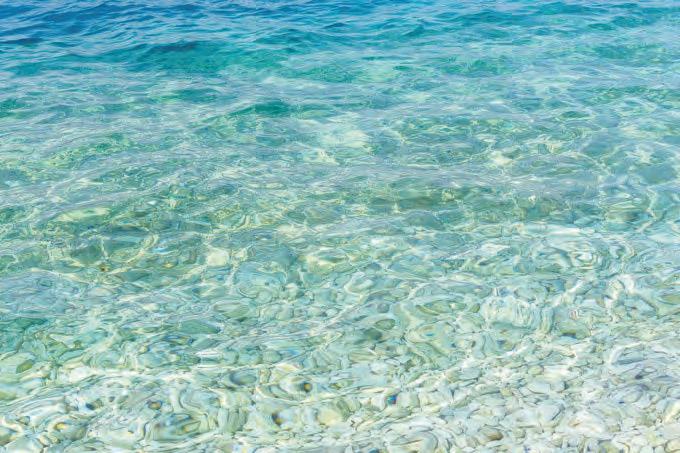








In the world of watersports, outdoors, and coastal living, staying ahead of the curve isn’t just a competitive edge—it’s a necessity. That’s where Surf Expo comes in. As the leading marketplace for watersports, coastal, and outdoor lifestyle brands, Surf Expo isn’t just another trade show—it’s the heartbeat of the industry.


Held twice a year in Orlando, Surf Expo draws thousands of retail buyers and brands from across the country—and around the world. From tackle shop owners and coastal outfitters to resort boutiques and outdoor lifestyle stores, attendees come to explore, connect, and stock their shelves with the hottest products for the season ahead.
What makes Surf Expo such an essential stop on the retail calendar? It starts with the sheer variety. From high-performance gear and accessories to apparel lines that bridge the gap between beachwear and everyday style, the show covers every angle of coastal living. Whether your customers are anglers, surfers, paddleboarders, or just enjoy hanging out on a shoreline, you’ll find products that resonate.
Surf Expo is a launchpad for innovation. It’s where new brands make their debut and where trusted names unveil their latest collections. Walk the floor, and you’ll see sustainable materials in outdoor apparel and gear—trends that shape what ends up in your store and, ultimately, in the hands of your customers.
But it’s not just about the gear. Surf Expo is a place to connect and build lasting connections. With educational sessions and hands-on demos, retailers gain real-time insights into consumer behavior, merchandising strategies, and industry evolution. The chance to hear from thought leaders and engage in conversations that shape the future of the industry is invaluable.
Even more than a business event, Surf Expo feels like a gathering of friends. There’s an unmistakable sense of community that comes from being surrounded by people who love the water, the outdoors, and the lifestyle that ties it all together. It’s an event where passion meets professionalism, and where inspiration flows.
For businesses grounded in coastal life—whether you run a marina shop, a beachfront boutique, or an outdoor outfitter—Surf Expo offers the perfect blend of product discovery, industry insight, and relationship building. It’s a one-stop destination to get inspired, get stocked, and get ahead.
Attend Surf Expo, and experience firsthand where the business of coastal lifestyle meets the adventure of the outdoors. Because when it comes to outfitting your customers for life on or near the water, this is where it all begins.
Visit surfexpo.com to see a list of exhibitors and events.
Qualified Retail Buyers - Register for Free Before August 21, 2025.









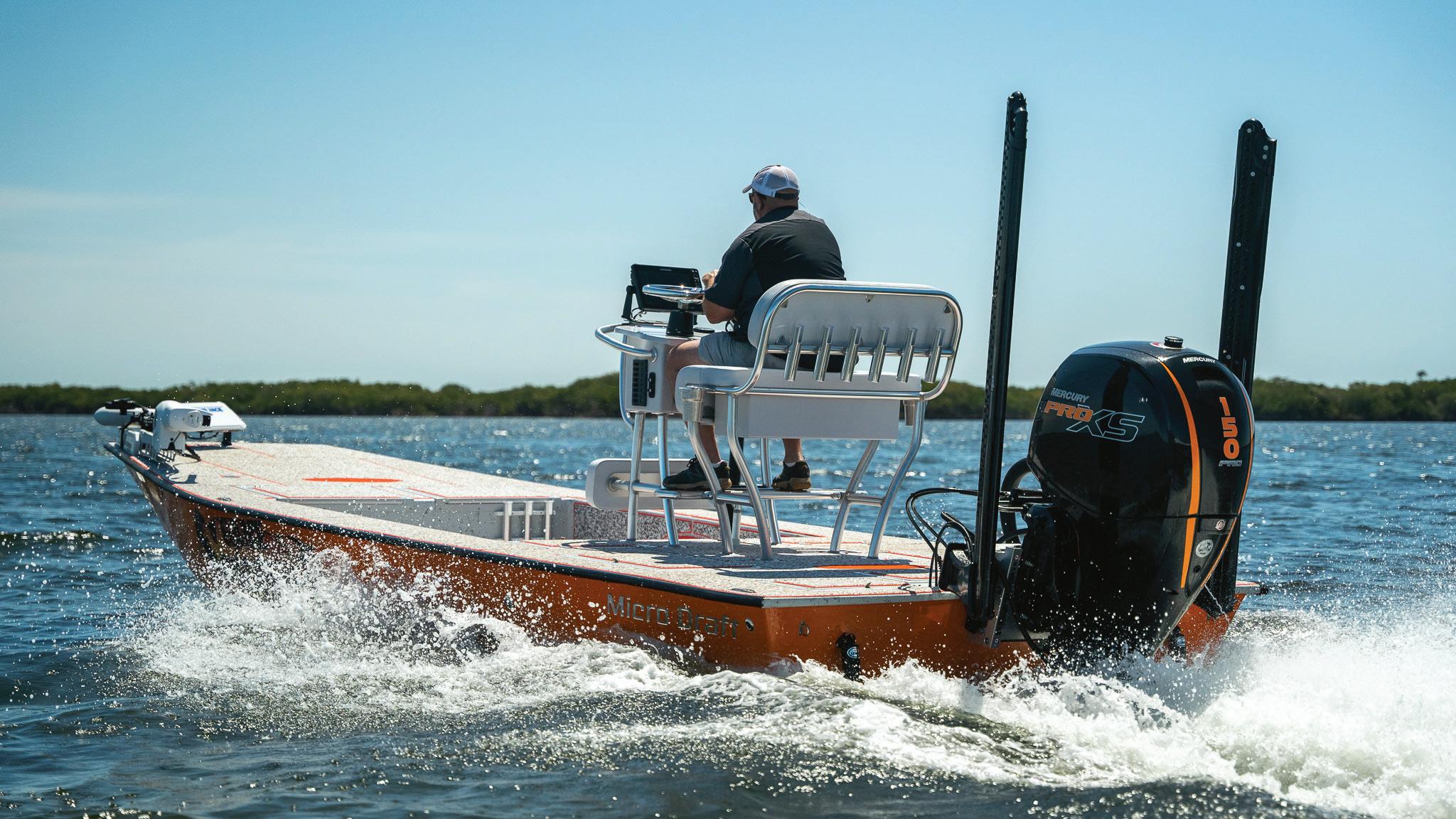
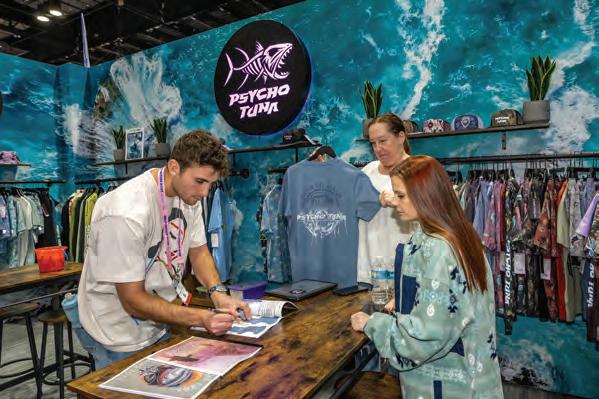

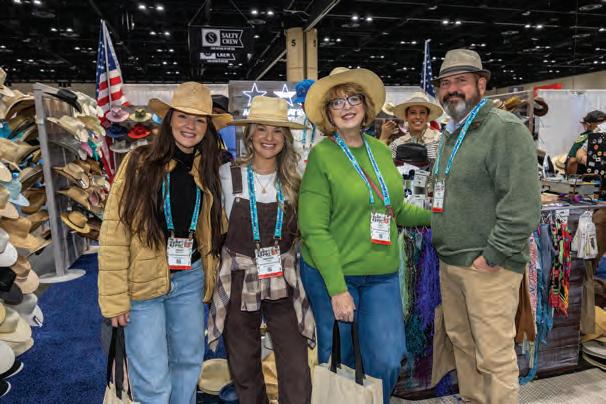
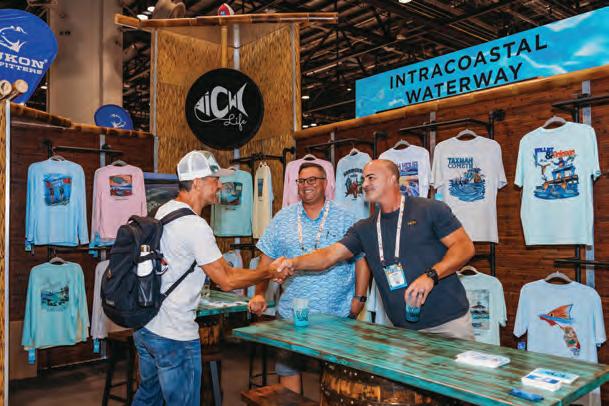

By atch Maguire
For retailers in the outdoor industry, showing up at ICAST each year is a pilgrimage that enables every town and every shery in many countries to be equipped to catch more sh and pursue their outdoor experience better. New innovations and inventions are the hallmark of this massive four day event, and while we all recognize the rapid rate of change occurring in our lives through advancements in technology and entrepreneurial excellence, witnessing the evolution of the art of catching sh over the last 25 years has, for this writer, been nothing short of mind-boggling. It’s as if the sh don’t stand a chance. Today’s electronics and gear are so advanced that anglers can almost negate the luck and even the skill factor that played such an important role in yesterday’s angling success. !at’s not to say acquiring the skills and

ICAST 2025, the world’s largest sport shing tradeshow, will be held July 15-18 at the Orange County Convention Center in Orlando, Fla. ICAST is a trade-based show and is not open to the general public. “The show is the cornerstone of the sport shing industry, bringing together manufacturers, retailers, consumers, conservationists, state agencies and other sport shing stakeholders. In its 68th year, ICAST continues to be the place where the most valuable business relationships are born, strengthened and celebrated.” www.icast shing.org
expertise to utilize today’s innovative equipment doesn’t require e ort, dedication, and focus as the pursuit of excellence in shing did a generation ago; it’s only to say that it’s di erent today and to suggest that it will continue to evolve.
I recently shed with an accomplished young guide for snook in the Sebastian Inlet (on the east coast of central Florida) and his electronics and forward sonar were so exceptionally dialed in that we literally targeted the largest snook with the precisely duplicated bait and in a three hour trip we caught nine world class snook that, any one of




which, 20 years ago would have been considered a “ sh of a lifetime.” Braid line, superior rods, smooth reels. All these advancements made their introductions at ICAST.
!is year, Coastal Angler and its’ vast network of Franchisee Co-publishers will be scouring the booths to bring you the latest and greatest in new innovations to our beloved sport.
For an up to date look at what we’re seeing at ICAST 2025, check out all of our ICAST coverage at CoastalAnglerMag.com and VidMag.com.

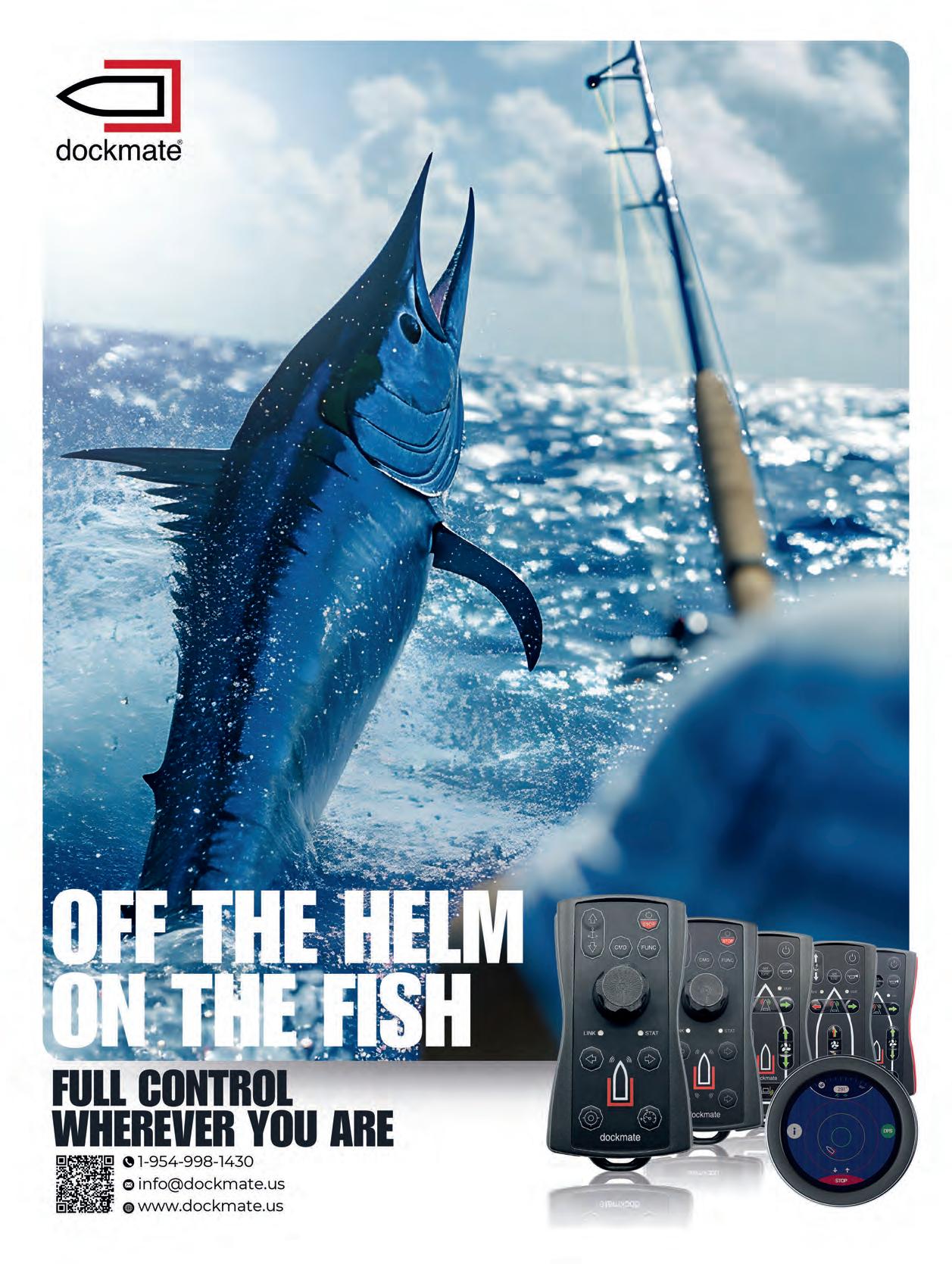


The Coastal Conservation Association (CCA) Florida STAR competition presented by Yamaha is thrilled to announce the newest division to the summer-long shing event, the Drum Spots “Lots-a-Spots” red sh division presented by Gulf States Automation. !e new division adds a unique twist to the popular catchphoto-release competition by awarding anglers for catching red sh with the highest number of spots.
Unlike any other division, “Lots-A-Spots” celebrates one of the most distinctive and eyecatching features of red sh, the iconic black spots. Participants in this division will submit photos of his or her catch, and the sh with the most combined spots on both sides will be awarded prizes.
“We’re thrilled to introduce the Drum Spots ‘Lots-A-Spots’ division presented by Gulf States Automation to the 2025 CCA Florida STAR competition,” STAR Director Capt. Leiza Fitzgerald said. “ !is exciting, new division adds another level of fun and strategy for our anglers, rewarding those who reel in the red sh with
the most spots. It’s a great way to celebrate the unique beauty of these sh while encouraging participation in a conservation-minded, catchphoto-release shing competition.”
!e “Lots-A-Spots” division continues STAR’s mission to highlight Florida’s diverse marine resources while encouraging sustainable practices through catch-photo-release participation. Anglers who participate in the division must submit photos of the le$ and right side of the red sh. !e winning sh will be the red sh with the most spots counted and combined on both sides of the sh’s body.
!e 2025 CCA Florida STAR competition presented by Yamaha invites anglers and nonanglers alike to participate for their chance to win prizes valued at almost $500,000, including boats from Carolina Ski , Sea Born, Spyder and Micro Dra$ Ski , Yamaha motors, scholarships and more.
Registration is open throughout the competition. To register for STAR 2025 or for more information on divisions, prizes and more, visit cca star.com.

• 1st Place: SUP Customs Hybrid Skiff with trolling motor bow mount, Minn Kota Riptide Power Drive 12V Trolling Motor & transom bracket with 6HP Yamaha, Power Pole Micro, and a great accessories package plus a Ross Currington Art replica of winning redfish
• 2nd Place: Abyss Battery 36V Battery with charger, Ross Currington Art replica of winning fish, Bull Bay Rod/ Florida Fishing Products Reel and Bahio Sunglasses
• 3rd Place: Power Pole 8ft Sportsman, King Sailfish Mount replica of winning fish, Bahio Sunglasses and Relentless Knife
• 4th Place: original art piece by Ashton Howard, RCI optics and NLBN Package
• 5th Place: Bay Flats Lodge fishing trip for two plus food and lodging for two nights, RCI Sunglasses andToadfish Package
• 6th Place: Humminbird Helix 7, RCI Sunglasses, Zman Baits, Toadfish Package and NLBN Package



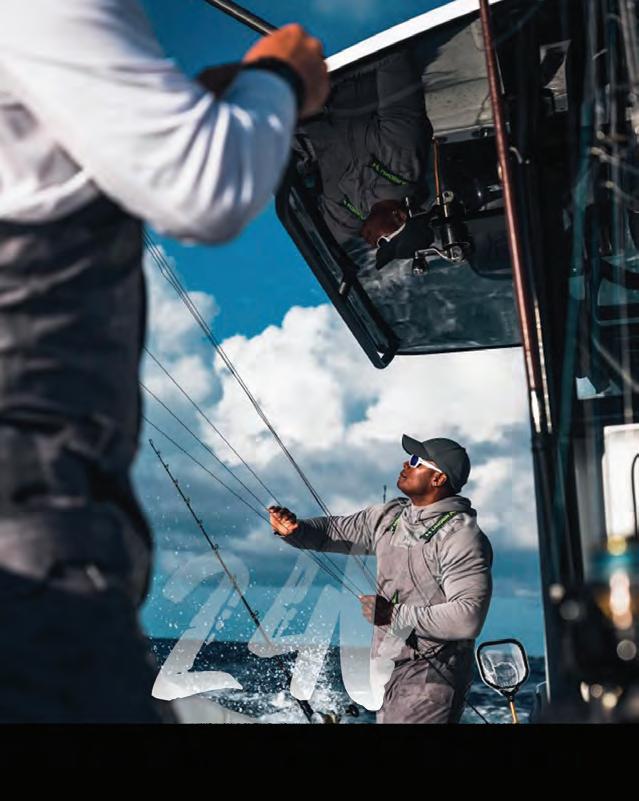



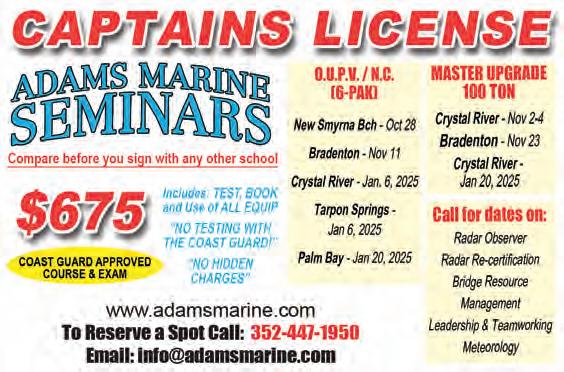













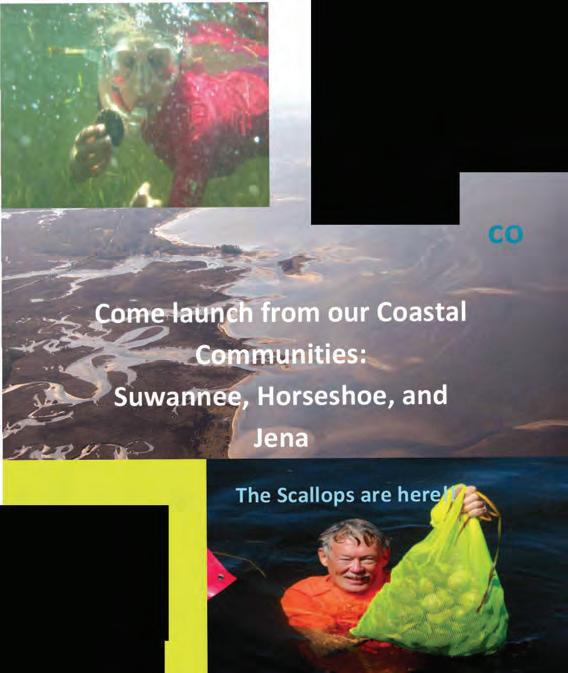
The International Game Fish Association’s (IGFA) world record database is a great source for folks who like to see some of the great sh anglers are catching around the world. Here are a handful of catches recently approved for the record books. For more world records, visit the IGFA website at igfa.org.
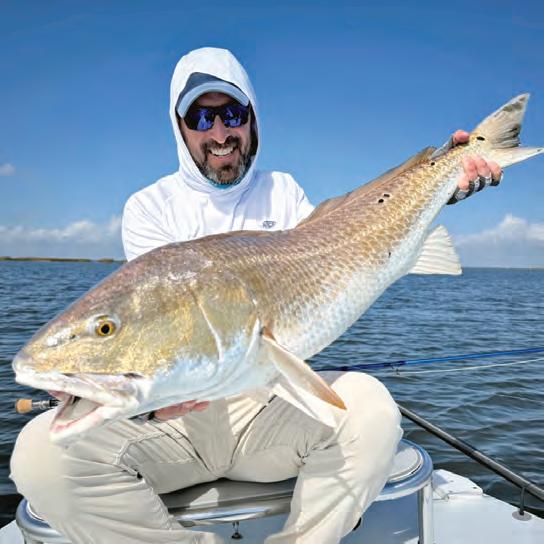


On November 11, 2024, Earl Gill IV was shing aboard the Excel captained by Justin Fleck when he landed this massive 443-pound yellow n tuna. With this sh, Earl has set the IGFA All-Tackle World Record as well as the IGFA Men’s 60-kg (130 lb.) Line Class World Record for the species, surpassing the previous records by 16 pounds! !e Excel was shing the Lower Banks o Mexico when this record yellow n struck Earl’s cut bait. A$er an intense 1 hour and 45-minute ght, the crew was able to ga the tuna and bring it aboard.
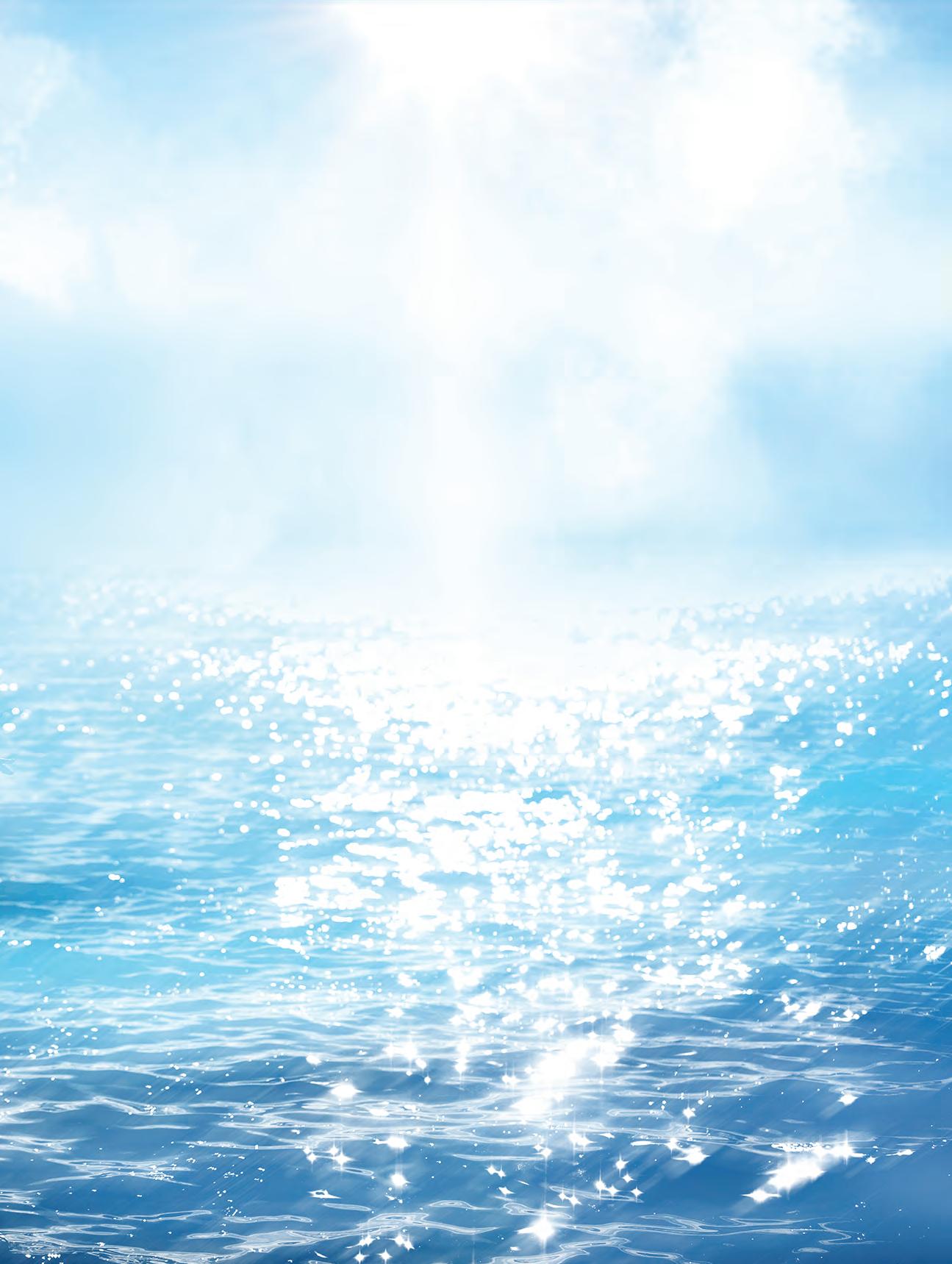
On February 9, 2025, Graig L. Hale was shing the backwaters near Port Sulphur, Louisiana, when he landed a 37.4-inch (95 cm) red drum—tying the IGFA All-Tackle Length Fly World Record for the species. !e record red sh ate a crab &y while Graig was shing with Capt. Scott MacCalla, making for an unforgettable day on the water. A$er boating the sh, Graig was able to record the length on his O cial IGFA Measuring Device before releasing the sh safely.

Pamela Moss was shing on Lake Lanier in Georgia on February 10, 2025, when she landed this 9-pound, 5-ounce landlocked striped bass. With this sh, Pam has set the IGFA Women’s 4-kg (8 lb.) Tippet Class World Record for the species. She was shing with guide Dillon Lancaster when she landed this record sh. She released the sh safely a$er recording the weight on her certi ed scale.
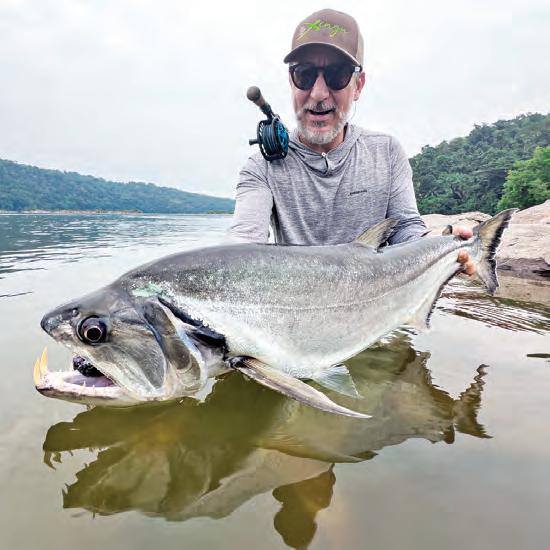
On November 22, 2024, IGFA Representative and multiple World Record holder, Rodrigo Salles, was shing the Rio Xingu in Brazil when he landed this 33.07-inch (84 cm) payara. With this sh, Rodrigo has set the IGFA All-Tackle Length Fly World Record for the species. Rodrigo landed the toothy payara on a black streamer &y. He was then able to record the length on his O cial IGFA Measuring Device before releasing the sh safely.

When it’s time to get on the water, your gear should be as ready as you are. Introducing the new and completely redesigned - Plano® StowAway®. Thick, pre-cut dividers make for easy box setup. More divider slots allow you to store more lures. RustrictorTM technology blocks rust and corrosion to help keep your favorite tackle rust-free. A single latch with a labeling area helps to quickly identify and access tackle on the fy. The best part? We’ve kept your favorite Plano StowAway at the same affordable price. Don’t just be kind of ready - be Plano ready.


July and August will be the hottest months of the year. !e wahoo and yellow nn will be everywhere and nowhere they should be. For example, you could go up and down the edge of the break and not nd a wahoo or a yellow n anywhere, but the guy slow trolling a menhaden for king mackerel 10 miles o# the beach catches a 100-pound wahoo or the guy 30 miles o# the beach light lining a pin sh while bottom shing catches a 50-pound yellow n. None of it makes any sense this time of the year, except one thing... nd the bait, nd the sh. !e same thing applies to bottom shing. !is is the time of year to search for big stacks of bee liners, cigar minnows, and sardines. Keep an eye on the recorder when you’re running to wherever you’re going, and if you see a big stack of bait on the surface, take a minute to check it out. If that stack of bait happens to be near pretty bottom, there’s a good chance it’s a good place to sh. !is is the time of year when it is especially productive to jig live cigars and sardines and put them back out.
whatever you want to, but stay focused on the bottom. Always keep a pitch rod handy with a live cigar, mina or sardine on a small circle hook and $ourocarbon. You never know when a sail sh will swim by the boat. When it does happen, remain calm do not go screaming and running around the deck because, chances are, you will spook the sh and not get another shot presenting a bait to it. If you’re very quiet, chances are a sail sh will come right back to the boat and you’ll get a shot at hand-feeding him a cig or sardine. And just like that...you’re hooked up!
It’s always a good idea to keep one person dedicated to the Sabiki. When you have big marks on the bottom or see schools of bait on the surface, just know that every one of those minnows caught on the Sabiki turns into a bite, either on the light line or on the bottom.

Of course, I have to say all of this to promote bottom shing because I do not believe in trolling. For all the sh you’re trying to catch trolling, you can hook on the light line while bottom shing. Not only that, sh are a lot more fun to catch on light tackle from an anchored-up boat rather than with trolling gear. Do I like to catch kings and dolphin on the light line? Yes. Are they my favorite sh to eat? No! Yes, they are edible, but I prefer to eat sh from the bottom. So, keep a light line out to catch and release
Needless to say, a live cig or sardine has a life expectancy on my Decoy Jig of under 10 seconds and everything eats one on the light line.

So, go to all your normal places in July and August that traditionally hold the bait, and you will most likely nd the sh. Live bait is always the best, but don’t ever leave the hill without a box or two of frozen cigar minnows. More sh have been caught on frozen cigs and sardines, than all the other baits combined. It’s never a bad idea to take live pin sh from the marina as well; the beauty live pin sh is that not everybody down there can put it in their mouth which eliminates a bunch of trash bites.
Yes, you will have to deal with catching and releasing all the “endangered” American red snappers and gag grouper, but that’s just what you’re gonna have to do until we can get this straightened out. Learn how to handle these sh properly for a successful release and come home with some good dinners.
Check out more from Tim Barefoot at barefootcatsandtackle.com.



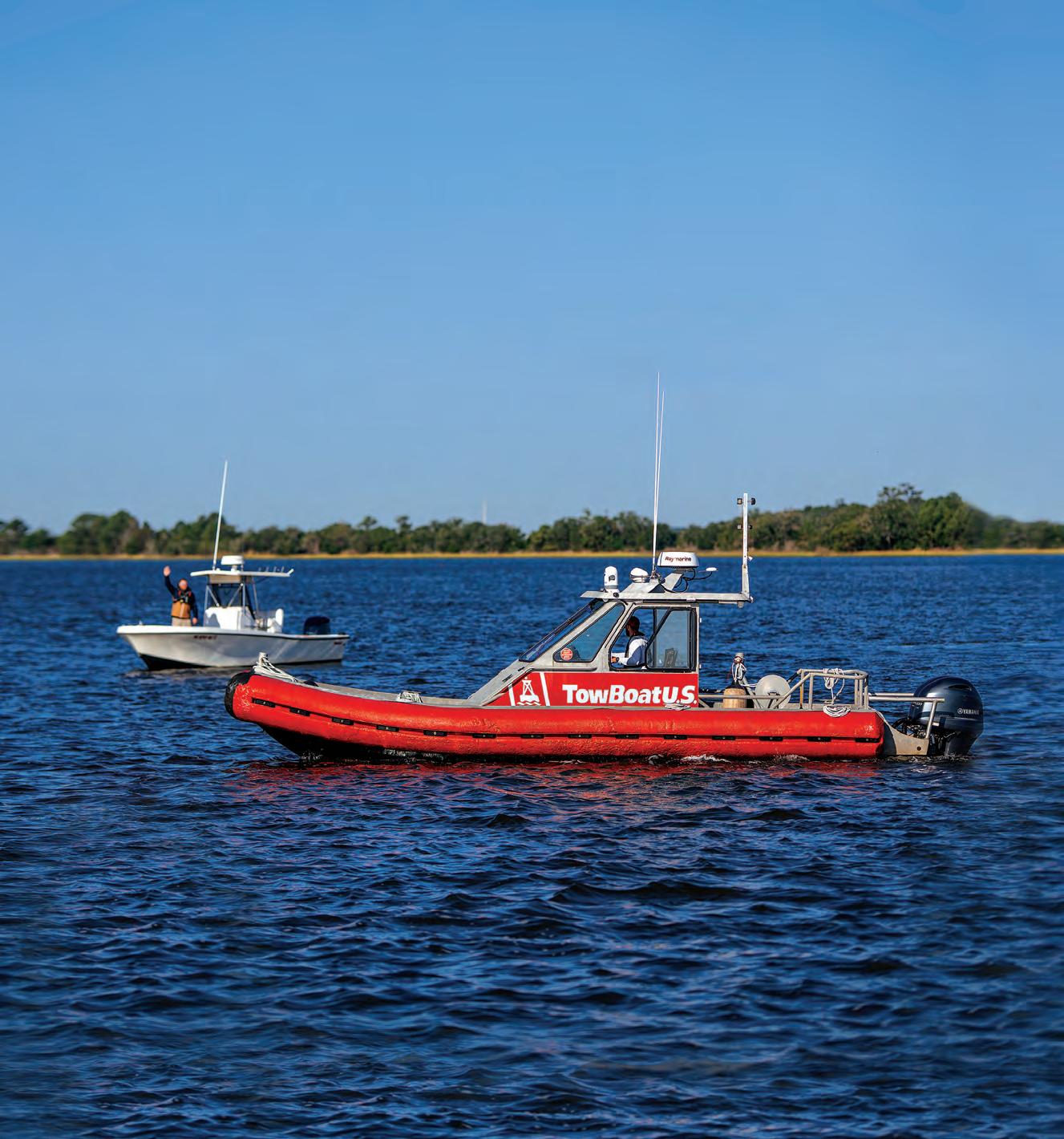

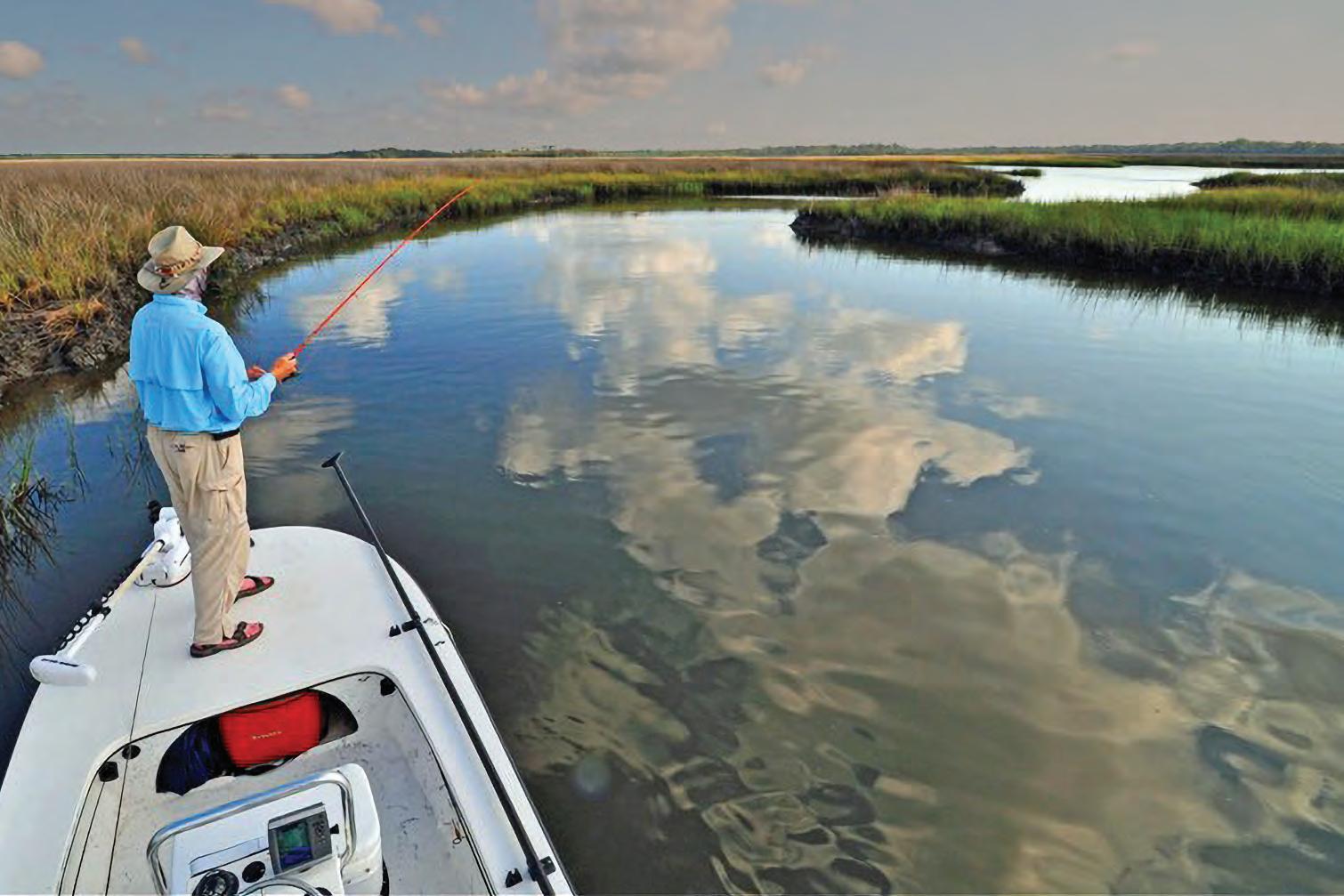




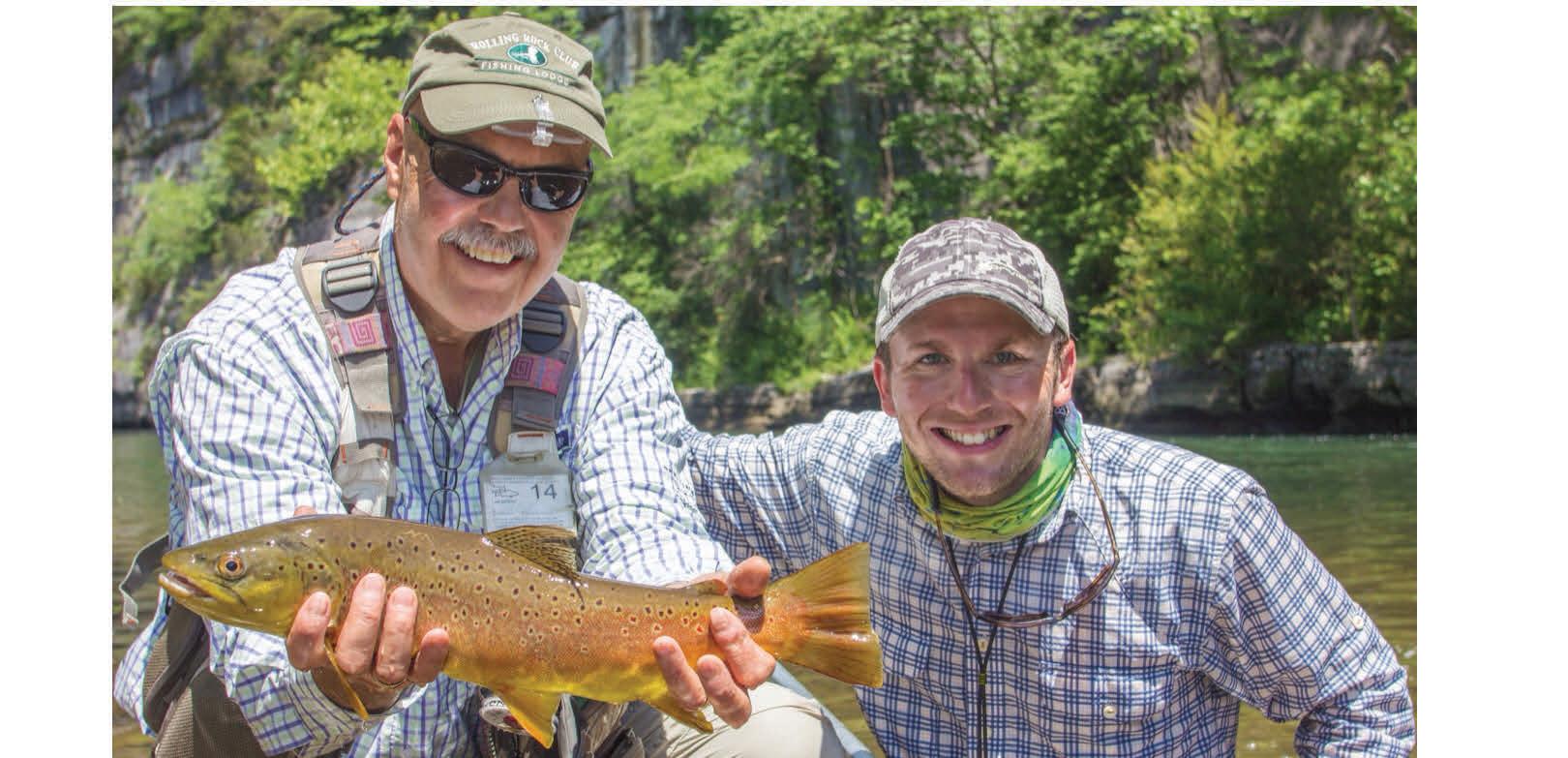




In general, the trend in boating these days is bigger is better. Right? Engine horsepower is getting higher and higher, and boats are being built able to accommodate two, four, even six engines. But what about the other end of the spectrum—anglers and cruisers that are looking for the ultimate in portable propulsion? Whether you are looking for a boost for your kayak or a reliable motor for your in$atable shing boat or tender, the perfect engine should be lightweight, easy to take on and o#, easy to use and provide the range and speed for almost any conditions. It should be selfcontained, so you don’t have to deal with lugging around a fuel tank, or even have to purchase and safely store gasoline on your boat.
Electric propulsion is the way to go, but no one has really gotten the

converters, the eLite can be fully charged in around four hours. For added capability and convenience, the engine includes a USB-C output that allows users to charge and power other electrical devices. At just under three-feet in length and weighing 14.7-pounds including the built-in battery, the eLite stores easily and the one-click quick-release bracket allows for installation and removal in a matter of seconds. For exceptional portability, the tiller handle converts to a perfectly balanced carry handle. With multiple trim and tilt angles, adjustable steering resistance and sha length, and a shallow-water mode, the eLite is completely customizable. Its Smart Battery Monitoring System e%ciently optimizes performance, carefully regulating battery level, temperature, and remaining state-of-charge all displayed on an ultra-simple interface, leading to extended range, a more energy-e%cient operation and longer battery life. Built to last, it is IP67 waterproof, and is constructed of aviationgrade aluminum alloy for lighter weight and greater durability. In addition, the anti-ground auto kick-up feature protects the motor from accidental damage. Available for under $1,000, it is also the most a#ordable electric outboard in its class.
!ere’s no time like today to upgrade to the electric outboard of the future. !e ePropulsion eLite is in stock and ready to take you quietly and sustainably to your next adventure.






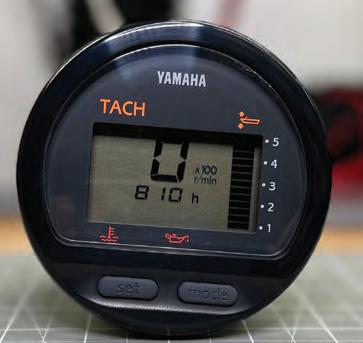



TYLER WOOLCOTT

Most of the time the saying is true, bigger bait equals a bigger sh! Although elephants eat peanuts, a big bait pro le is something sh can’t resist no matter if you are shing the open ocean or the Great Lakes. I have spent a lot of time over the last few years throwing baits bigger than my old “comfort zone” sizes for bass and it is pretty special what gets curious to come look or bite them.
!ere are many di#erent types of swimbaits out on the market, but I’ll break them down into two for this article to keep it simple. You have the hard, gliding-style treble hook swimbaits, or you have so body swimbaits that is more of a steady slow reel and most of the time more weedless. !ey both have an awesome time and place to get thrown and will both attract some very big sh.
Depending on where you are in the country and the size of the forage in your lake, a normal meal for a bass is usually much bigger than you think. A 6- to 8-inch bluegill is something a two or three pound bass would have no issues at all with swallowing and eating it whole. A 10+ pounder, on the other hand, could eat bait sh such as gizzard shad up to 14 inches, which I have personally seen. Trying to exactly duplicate the larger bait sh that are in your lake in a natural presentation is the absolute best way to draw attention from sh to your arti cial lure.

Most of the time when I am throwing a gliding-style hard swimbait, my rst choice is always going to be a shad imitation. A majority of the
places I sh are full of shad and this seems to be a favorite food source for bass when available to them. Another major large food source for big bass that a lot of people forget about are crappie. I have personally witnessed some absolute giant bass in multiple lakes that feed primarily on crappie. When throwing so swimbaits my go-to imitation is typically a bluegill. Usually when I’m throwing a so swimbait I’m wanting to either creep it through grass or along the bottom, which calls for a more weedless rig. Both places bluegill typically live and the bass that feed on them aren’t usually too far away. !ere are many di#erent brands of swimbaits out there, hard and so . When rst starting out I would stick to some of the a#ordable baits that have good reviews by users and are proven to work until you build up your con dence, then start working your way up to bigger and more customized things.
When throwing bigger lures like swimbaits you typically want bigger equipment to throw them. 13 Fishing makes an awesome, very a#ordable 8-foot rod in their Defy series that can handle most swimbaits I throw. Pair this up with a 300 sized reel like the 13 Fishing Concept A3 and some 20-25 lb. Su x Advanced Fluorocarbon and you are ready to go battle with some big sh!
It’s hard to t all the info needed to explain this technique in this article, but I hope it sparks your interest to get out there and throw a big bait. !e best way to learn is to get on the water and give it a try for yourself! I tried it once and now it is one of the coolest and most fun ways I target big bass all year long.
Don’t be afraid to reach out via my website or social media platforms with any questions you may have!
Good luck out there and tight lines!
Tyler Woolcott is a professional tournament angler and guide. Check out his website at www.tylerwoolcott shing.com.


Weighing just 30 pounds, the portable and versatile DF 2.5HP outboard motor is the lightest Suzuki 4-stroke motor ever built. This smooth and quiet engine is water-cooled for increased dependability, features a digital CDI, and its anti corrosion system ensures the aluminum propeller stays durable in marine conditions. Steering and throttle tension and control are easily adjustable. Simple steering action for maneuvering in tight quarters. Easy-to-grip carrying handle conveniently tilts the motor up when needed. Meets the rigorous EPA 2010 and CARB 3-Star Ultra-Low emissions standards.




Three knives. ONE amazing price! Originally $249. Limited time special offer ONLY $69!

When you use your INSIDER OFFER CODE


— D., Houston, Texas TAKE 72% OFF INSTANTLY!
Looking for a knife that’s a cut above? We can do you two better. The Triple Play Knife Collection gives you three different styles of hunting blades for one unbelievably amazing price of just $69. Because serious hunters know that sometimes one knife isn’t enough, and so do serious collectors. All three blades in the Triple Play Knife Collection are made with genuine 440A stainless steel and measure an impressive 52-58 on the Rockwell scale for hardness. There’s the reliable lockback blade, designed to open up and never let you down. The two-blade trapper knife, engineered for those who trap small game, and a solid, simple, fine fixed blade measuring 9" in overall length, and the antler-textured handles on every knife complete the expert hunter look.


With all three blades along with a decorative display box priced at just $69, this is some big collectible prey worth hunting down. This deal truly is a cut above.

Satisfaction Guaranteed or Your Money Back. Try out the Triple Play Knife Collection for 30 days. If it doesn't make the cut, send it back for a full refund of the item price. Limited Reserves. We only have 850 available for this ad only at this incredible price. Call today!
What customers are saying about Stauer knives...
“First off, the shipping was fast and the quality is beyond what I paid for the knife. Overall I am a satisfied customer!”
Triple Play Knife Collection $249* Offer Code Price Only $69 + S&P Save $180
Your Insider Offer Code: TPK238-01
You must use the insider offer code to get our special price.

14091 Southcross Drive W., Dept. TPK238-01
Burnsville, Minnesota 55337 www.stauer.com
*Discount is only for customers who use the offer code versus the listed original Stauer.com price.
Rating of A+ California residents, please call 1-800-333-2045 regarding Proposition 65 regulations before purchasing this product.

• 3-piece set: 9" overall fixed knife with 5" blade; 4 ¹⁄8" trapper knife with two 3 ³⁄8" blades; 4" overall lockback knife with 3" blade • Stainless steel blades with antler patterned resin handle • Comes in decorative display box
Stauer… Afford the Extraordinary .®
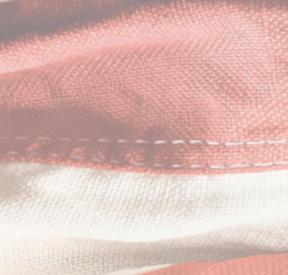




















Troughout history, the eagle and the anchor have stood as enduring symbols of power and resolve. Te eagle, with its mighty wings and piercing gaze, has long been a representation of freedom and bravery, soaring high above, ever watchful and unyielding. Te anchor, frmly rooted, embodies stability and steadfastness, grounding even the fercest storms. Together, these two symbols have come to represent those who serve with honor - those who rise to meet any challenge, yet remain rooted in integrity.








Inspired by this profound symbolism, the Wings of Honor pendant brings together the soaring spirit of the eagle and the enduring strength of the anchor in one stunning design. Crafed from premium stainless steel and fnished with a luxurious 18k gold coating, this pendant is not just a piece of jewelry - it’s a tribute to the values that have defned generations of heroes.










Te Wings of Honor pendant is a statement piece that speaks to the legacy of all who wear it. Whether as a gif for yourself or for someone whose story is woven with honor and valor, this pendant carries a deep sense of pride.




And now, this remarkable symbol of strength can be yours for an incredible price - just $39 plus S&H. By using the special code CA5WHP, you can secure this timeless piece, saving you more than you’d expect for such crafsmanship.
A lasting reminder of bravery and commitment, the Wings of Honor pendant connects the wearer to the rich heritage of those who stand for both freedom and stability. It is more than an accessory - it’s a refection of the values we hold close, ready to be passed from one generation to the next. Claim yours today, and wear your story with pride.










Wings of Honor Gold & Steel Pendant - $149 $39 - Save $110








$39 Special Offer
































* Exclusive Ofer Price Using Discount Code Pendant & 24” 18k Gold Plated Rope Chain - $278 $59 - Save $219





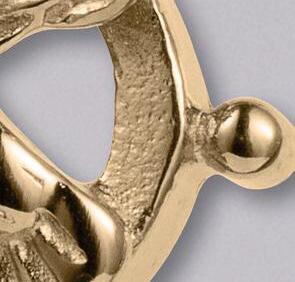






“No bird soars too high if he soars with his own wings”
- William Blake, English poet














Whether you’re fishing from a paddleboard, kayak, canoe or small boat, the ePropulsion eLite 500W redefines your on-water experience with innovative features and commitment to sustainability. Designed to be the most compact and lightweight electric outboard in its class, the eLite is an easy-to-use alternative to small internal combustion engines for enthusiasts worldwide. Max 5.6 miles at half throttle and 3.5 miles at full throttle.




